Exploring Namibia far and wide
Year: April 2019
Countries: Namibia
Km: 3119
Vehicle: Toyota Hilux 4x4
Camera: Sony A7
Directing: GPS with OpenStreetMap
Planning & arranging: Self
Driving: Self-drive
in bold location to stay
- Windhoek
- -> Spreetshoogte pass
- -> Solitaire
- -> Sesriem (Namib-Naukluft National Park)
- -> Naukluft Mountains
- Naukluft Mountain Zebra Park (Olive Trail)
- -> Etosha National Park
- -> Windhoek
For the fourth time we are in Namibia, a land now familiar, but never predictable. Crossing once again the Naukluft mountains that act as a parched bulwark between the savannah of the Kalahari and the hypnotic and sensual dunes of the Namib is a journey that has become both comfortable in its being known but at the same time full of pure spirit of adventure.
Windhoek airport and the road connecting to the city are now well known to us. Having recovered our 4x4, we set off quickly towards the Namib, sliding away the fast-flowing roads of the capital, we point the map towards the southwest.
The first significant stop to admire the spectacle of Namib which opens up in all its majestic and breathtaking beauty is the Spreetshoogte pass. Before arriving here, shortly after leaving Windhoek, along the C26, Namibia gives us its first spectacular magic: the rain, in heavy drops, at times sparse, but significant, falls from the sky, as a fantastic blessing for this land thirsty.
Baboons, warthogs, birds accompany a savannah drawn in a postcard, with roads that run across the horizon between mountains with primordial shapes and iconic acacias.
Once at the crossroads with the D1275, you can hear the Namib approaching and now not far from you.
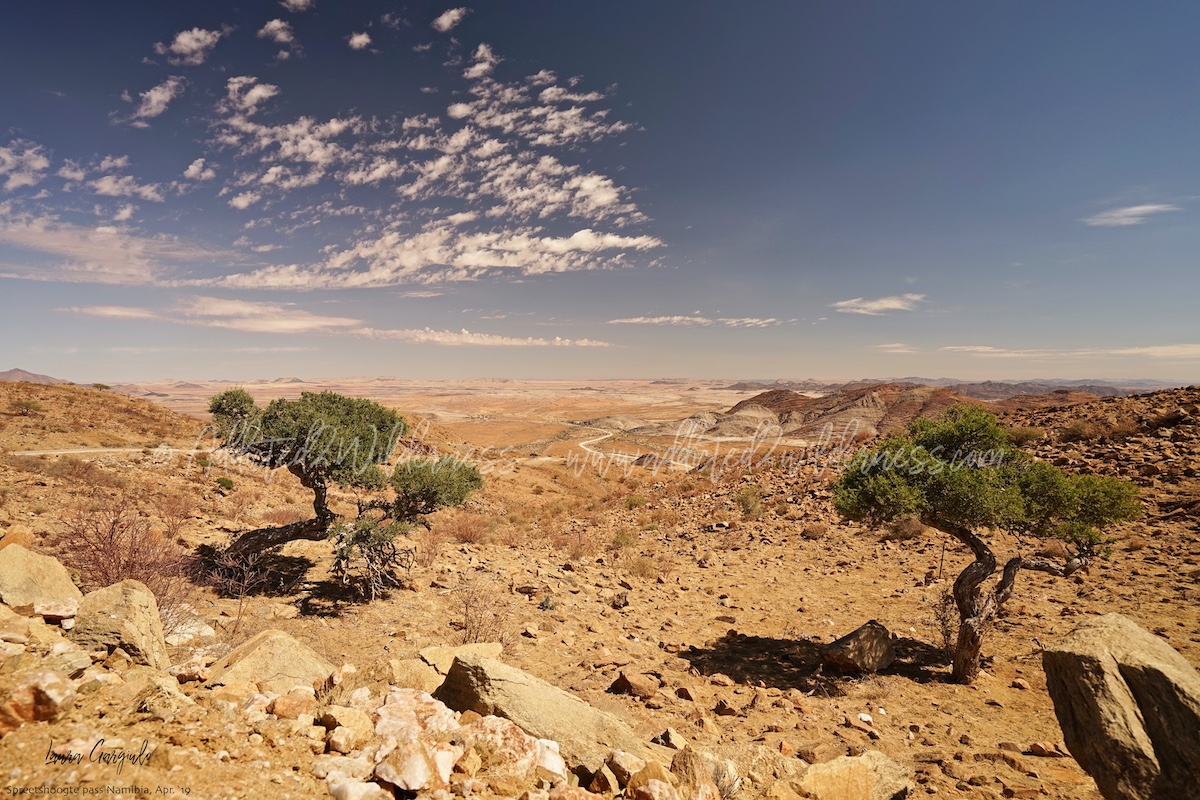
The Spreetshoogte pass is a kind of portal to an incredible world, indefinite between the alien and fantasy. This step offers an unmissable panoramic point, where the gaze can sweep endlessly and get lost in a multitude of colors and lines worthy of the most eclectic painting of modern art.
Enchanted, for the umpteenth time, even more than the first, we gather our breath, suspended in admiring such a sublime panorama, we resume driving and head straight for the next stop along our path, the familiar and welcoming fixed stage of our journeys to the Namib desert, Solitaire.
Solitaire is a perfect stop-over for a refueling on the way between desert and arid savannah; it is a rest stop that quickly became a place of great tourist attraction, thanks also to the unexpected, but traditional, apple pie. Although the growing and large (relatively speaking) tourist flow, this desert camp retains an almost mythical charm, a passage to be recorded in the memory of one's travels.
In over five years of trips in Namibia, we jump-off the 4x4 once again in Solitare, enjoy an apple pie in the shade of the patio populated by curious birds, breathe the dry and clear air of the nearby desert, enjoy the warm colors of the earth that mix with the indigo blue sky and the dusty lines of off-road vehicles that run towards adventure, it is a feeling that makes us feel almost as if we were at home, an atmosphere that makes us feel at ease, that heralds a pleasant and welcoming return. Let's have a look around the small emporium and set off again leaving the C14 to take the C19, which runs increasingly dusty towards the heart of the desert.
The road passes along various points of interest worthy of a stop, such as the Petrified Dune (photo above), but every time we are eager to arrive at our destination as soon as possible, to be able to immediately venture into a walk among the crests of the Naukluft mountains that sink into the Namib. So we head straight for Sesriem!
The Namib Naukluft National park offers roads with exciting horizons every time, difficult to describe with words and photos. Every time here, it seems to us that the white and haggard clouds (clouds: you read that right) that draw this sky are unique; they are paintings of dragons, cloaks of heroes, dreamlike images of pilgrims wandering through infinite oceans, in an upside-down world, where the sea is standing between our heads and the ocher and orange waves are refracted trembling at the horizon of the Namib, as if they were suspended in a sort of hazy atmosphere. The last offshoots of the Naukluft mountains that we silted up by the dunes of the Namib, seem to have returned from a last strenuous battle, where acacias of incredible charm act as solitary spectators along roads that lead us towards infinity.
Past Sesriem, the last outpost in the desert, worthy of narratives of epic adventures from colonial eras lost in the recent past, we are just a few kilometers away to reach our destination: a desert camp halfway between an oasis and a fortified castle, where in addition to a few lucky ones, only oryx, jackals, porcupines and a few others go.
A place that emerged from a fantasy tale, not far from the magnificent Sossusvlei and close to the Namibrand, to which we can return as soon as possible, whenever the call of the Namib catches us. Also this time we will spend here 5 memorable days in the desert.
The journey was long, but the call of the Namib is magnetic. After enjoying the welcome and a fresh drink, we refresh ourselves a little and then off, immediately to explore the territory ready to enjoy a perfect sunset that is a refined pink caress, with an emotional intensity with few equals.
A few steps from our lodge, towards the winking profiles of the Namib and we soon find ourselves discovering that late April is a period of exceptional vitality for the fauna, although Nambia is going through years of tremendous drought that puts a strain on wildlife and other .
We take the opportunity to photograph families of oryx and solitary stallions, admiring them grazing placidly at sunset.
We push ourselves on and on, hungry by the curiosity to discover what magnificent views lie behind the next hill and after that again.
Of the sunset on these mountains and dunes, we do not add anything else to what has already been said, because it is an emotion and a privilege that can only be understood by experiencing the moment in first person.
Although already well aware of the beauty that awaited us at sunset in the heart of the Namib, we remain speechless to admire so much spectacle, intrigued and fascinated by seeing the famous desert circles for the first time, curiously still cloaked in mystery about their true nature .
Insatiable with such wonder, we decide to return to our beautifully located lodge to enjoy a perfect sundowner, sipping a drink in the padded light of the Namib sky, while oryx and other splendid desert animals give us a memorable show with their wander to the waterhole located a short distance from us, like a perfect stage for nature.
Late evening and after dinner around boma's warm fire, being sitted under a magneficent starry sky in Namib desert, while the amazing show of wildlife pilgrimage goes on, it's a life memorable experience.
After a gorgeous first half day & night, the first full day in Namib is obviously dedicated to Sossusvlei.
Namib-Naukluft National Park: Sossusvlei section
We enjoy the sunrise completing the show on the enchanted landscape of the Namib and, after a great breakfast and some photos, we collect our photographic and trekking equipment and jump into our 4x4.
The road to Sossusvlei is already well known and engraved in our memory, but we still have our GPS maps with us to move safely. Full tank and swollen spare tires, we load our backpacks on the pick-up and set off on an adventure.
We go back along the C27 up to Sesriem, where the entrance gate for the section of the Namib-Naukluft park that culminates in Sossuslvei is located.
Where the C27 crosses the D826, basically the central point of Sesriem, coming from the south, we find the gate on our left. The entrance is quick and the road also becomes asphalted, allowing for most of the route also the traffic with a two-wheel drive car.
Even this further time, we missed the visit to Sesriem Canyon, which could be reached by taking a deroute on the left straight after the entrance gate. The recall by the world you can find along the main road and mostly at the end of it are so amazing that we decided to dedicate every single minute of our day to it. The well-asphalted road, which runs along the arid bed of the Tsauchab River, could apparently go by quickly, but we recommend that you take your time for the necessary stops along the magnificent route (from the entrance gate at the end of the road where there is parking for two-wheel drive cars, there are about 60 kms).
The Tsauchab in its ephemeral flow (for a few hours in the face of rains fallen on Naukluft Mountain) has generated an incredible and enchanted world over millions of years.
Our last trip here was in Namibian late autumn / early winter (late April). Although Namibia is experiencing years of extreme drought, this season offers a higher concentration of animals (and cubs) than the traditional winter tourist period (August), drier and therefore definitely more inhospitable for animals.
Thanks to this, our journey towards Sossusvlei, like the whole Namib-Naukluf area we visited, gave us encounters with a large number of oryxes, giving us the opportunity to enjoy splendid moments and take fantastic photos.
Tsauchab is an extremely ephemeral river: in its meeting with the Namib desert, before creating that work of art of immeasurable beauty that is Sossusvlei (currently active endorheic basin), it created and modeled the Hiddenvlei and the Deadvlei, as well as the Sesriem Canyon and the wonderland landscape stretching from Sesriem to Sossusvlei.
The Deadvlei with its dead acacia trees (Vachellia erioloba) is probably the most iconic and photographed representation in all of Namibia.
The wood does not decompose because it is so dry and the black skeletons of the trees (due to intense sun) create a surreal and fantastic painting in contrast with the white of dry marsh soil, sourrounded by the rich orange color of world tallest dunes and deep blue of the sky.
On our first visit here we dedicated most of our time to a memorable hike on the Big Daddy Dune (the highest dune in the world, rising from the surrounding ground to a height of almost 400 meters, up to an altitude of 800 meters on the sea level). If you wish, like us on our first trip here, to do the entire trekking route, consider that the climb to the top of the Big Daddy Dune is quite strenuous, especially with backpack and photographic equipment, but the surrounding view of the desert, the mountains and on the Deadvlei it is wonderful. The very steep descent towards Deadvlei is no less demanding. NOTE: you will walk in the sand sometimes even deep, pay attention because the Namib is the home of snakes (for example the puff adder, which is a fearsome blowing viper - Bitis arietans) and scorpions, so it is good to be careful, cautious and well equipped. Do not show up, like most tourists, with sandals or light shoes, but be a serious adventurer wear solid and high hiking boots, long and sturdy pants. Even a pair of trekking poles can make you comfortable on steep slopes.
Remember: always respect nature and animals, they are the heroic inhabitants of these incredible places, you only passing guests!
The trekking trail to Deadvlei starts few kms after the parking area located at the end of the paved road that leads from Sesriem towards Sossuslvei (about 60 km). If you have a 4x4 we suggest to reach the Deadvlei parking area with your vehicle and start to enjoy your hike from there. Even if this first section of 4x4 trail is easier than the last one, please beware of deep sand road. The end of paved road above mentioned is the absolute limit for two-wheel drive cars. In addition to this pitch, to reach Sossusvlei, you must have a good 4x4 vehicle and have good off-road driving skills (alternatively you can organize yourself with agencies or park service to reach Sossusvlei, but we recommend that you equip yourself to enjoy a fantastic self-drive).
This time we made a faster stop to admire the Deadvlei (access with a softer and shorter route always from the lay-by), thus dedicating more time to a nice trek to the Hiddenvlei, which we had never visited, and to Sossusvlei ( knowing that the last 6 km of off-road road are demanding and take time) to enjoy this place of indescribable beauty calmly.
The trek to the Hiddenvlei also starts from the parking area at the end of the paved road. It is a much lesser known arid marsch than Deadvlei and Sossusvlei. Of course, the latter are an essential must for anyone visiting these places, but we guarantee that the Hiddenvlei will give you emotions of your own: you can enjoy the spectacle of a trek in the desert in greater solitude (note: the short trekking route to Deadvlei is probably the one most popular with tourists).
The hiking trail to the Hiddenvlei is initially flat, but the blazing sun and the final stretch of climbing the dunes behind which the Hiddenvlei hides make it quite challenging. Face it with a GPS map and adequate water supply.
Impossible to tell you how long you need, it could take a couple of hours or the whole day, it depends on how much time you want to dedicate to taking pictures and exploring the area by going down and up the dunes.
Once you reach the top of the dunes that welcome this now definitively arid marsh, the scenery becomes even more wonderful and you can better understand the magic that the Tsauchab river has created and which still continues to come to life in Sossusvlei today.
Once at the top, enjoy a ride along the north side (we advise you not to descend into the valley if you have anything other than Hiddenvlei scheduled for the day, as climbing the Namib dunes is long and tiring). Return heading north towards the trees. When walking in the desert try to constantly pay attention to memorize which direction you are coming from. When deciding your route, consider that although as the crow flies it may seem like a short and easy journey, you can run into dunes to climb and descend, where you will have to work hard and avoid getting lost. If possible use the GPS map and follow, if available, the paths indicated on your map.
Returning from our excursion to the Hiddenvlei, which along the way has turned into a sort of free wandering in the desert, we make a short stop at the pitch, where we had left our vehicle, for a frugal snack (in the shadow of a iconic acacia, cautious in observing there is no snake perched on it!) we decided to have quick visit to Deadvlei. Since at Deadvlei we had spent most of the time of our day-trip here in 2015, this time it wasn't supposed to be on our plan for the day, but as it is so stunning, the memory of this magnetized us and push us back to it, for a quick but emotional hike (see Deadvlei's section above).
... and then here we are, ready to jump into our 4x4 and face the adventurous last stretch of the route that will take us to Sossuslvei. About 6 kms separate the end of paved road to Sossuslvei, but these can be far behind your imagination about what 6kms can be. Several strips in the sand make a track which often is indefinite, full of pits and sections of bumping and losing terrain, where to remain stuck is likely to happen... Since we tackled this route in 2015 without being fully aware of the difficulty, but we managed to successfully complete it thanks to an excellent teamwork (as a driver and co-driver / navigator), this time we are prepared and ready to go!
In our most tested setup (Marco as a driver and Laura as a co-driver / navigator) we made a fantastic off-road vehicle jumping from one side of the route to the other, choosing the most suitable sand track. This time we are experienced enough to be completely relaxed, allowing us to take in the beautiful landscapes and amazing wildlife.
Obviously, however, we must pay the utmost attention to the track and let our 4x4 slide on the sand: it seems that no adventurer is traveling this stretch and even the tour agencies have already returned at this time of day. So, getting stuck there would be truly a mess and would probably force us to spend the night as castaways in the Namib sand sea. No worries, as mentioned, experience, attention and caution are always a perfect starting point for success.
We soon arrived at the southern shore of Sossusvlei, where we parked our vehicle, obviously next to an iconic acacia throng, home to a throng of unstoppable sparrows, living in a such strenuous environment.
Alone and free to enjoy such a magical place, we put on our backpack and with the cameras ready to shot we start our unforgettable hiking. We immediately find ourselves spotting oryxes roaming over the dunes. What a stunning place!
Laura, who is the official photographer?, is engaged in taking photos all around us, trying to catch iconic images of wonderful black & white oryxes designing the colorful dunes of Namib.
Before to start the ascent to Sossusvlei's Dune we are already astonished of such unbeliveable beauty: late April offers much more wildlife presence compared to our previous visit here in August and frankly speaking Sossusvlei is magical itself, but full of life is something far beyond whatever you can imagine.
While we try to take photos of the dunes around us, catching the oryxes with the telephotos, we find out we are walking through the home of the oryxes... they are everywhere around us, some of them resting in the shadow, some of them grazing around Soussuslvei, some other simply roaming to find out a good spot to have a rest.
Identifying the trekking route to go up the Sossuslvei dune is quite intuitive, although there are no indications. From the clearing where you can park your 4x4, continue aiming substantially straight towards the north. The Sossusvlei Dune is immediately visible and the rising ridge stands out lengthwise to your gaze.in any case, as always, the suggestion is to bring the gps map with you and monitor your track, following the previous Sossusvlei waypoint recorded (you did your homework, right ?!).
Before reaching the point of ascent to the actual dune, we find ourselves crossing a stretch of small dunes and valleys that line the white ephemeral lagoon of Sossusvlei, magically surrounded by acacias and bushes that create the perfect setting for an oasis in the desert.
This first section deserves to be covered by wandering a bit among the shrubs, wandering through the valleys to look for panoramic shots and have the opportunity to meet the fauna that populates this oasis up close.
Going up the Sossusvlei dune is a wonderful experience. It gives the feeling of being a true explorer in the desert in indefinite ages between reality and fantasy.
The effort (it is quite tiring, if you carry a backpack full of photographic equipment and supplies of water on your shoulder!) Is rewarded, indeed hidden, by the wonder you feel in stepping on such an extraordinary place, wrapped in dreamlike charm that is difficult to describe.
If you are lucky enough to be the only visitors (or in any case to visit this place at a low-traffic time of the day) you will be enchanted and you will carry the memory, the sensations and the emotional flavor with you forever.
Allow yourself at least a couple of hours between ascent and descent (to be added to the time required for the 6 + 6 km of off-road vehicles to reach the parking area - allow 20/30 minutes each way for this).
During the ascent we come across some curious creature that populates the slopes of the dunes overlooking the oasis of Sossusvlei with courage and strenuous ability to adapt. It is pleasant to spend time observing the nice lizards up close, but it is good to remember that among these sands also live scorpions and snakes (even lethal).
Always pay attention to where you step. True, it is impossible to predict what is under the sand, but it is of great help to be attentive, reasonable (possibly try to follow the existing paths and do not put your hands in the sand) and equipped with trekking boots, tall trekking socks - long pants, trekking poles. In any case, remember, this environment belongs to nature, so the first rule is respect!
You will find that there are time frames in life that last and are worth differently from everyone else.
It often happens that sometimes the places with the greatest tourist notoriety are only icons for marketing purposes for the promotion of tourism (usually mass). Any visitor who decides to embark on a trip to Namibia starts with the idea of visiting Sossusvlei as the top destination on the list. It is also true that there are many organized tours (tour operators and local agencies) that take tourists to this area of the Namib.
In reality, most tourists stop at the end of the easy-to-navigate road and visit the Deadvlei (wonderful). Those who really reach Sossusvlei do so, in the vast majority of cases, by organized tours with agencies for a short stop for a souvenir photo and a flag on the list.
Few are the travelers who organize themselves for a real excursion, for an adventurous and strenous hiking, to enjoy the unique panorama and splendor of this place.
We were saying, sometimes places of great tourist fame have better alternatives: NO, this certainly cannot be said for Sossuslvei. If Sossusvlei is Namibia's most famous tourist attraction and one of the most famous in the world (for its category - of course) it is because it is Sossusvlei. It has no comparison with anything else, not even with the most fervid imagination, not even with the scripts of the most fascinating travel diaries of desert explorers and fictional films that tell their exploits.
The time available was running short; there were several stops to admire the view and, as previously mentioned, the off-road section for the return is an element that can lead to possible unforeseen events and therefore must be considered with due caution.
Having said that, we were not discouraged although tired from the previous treks, this time unlike in 2015, we arrived here a little earlier and the sun, close at its sunset, was still high. We went to the top of the Sossusvlei Dune and filled our hearts with such beauty, appreciating even more this place (it seems incredible, but much more) than our first visit here.
As a perfect crowning of a wonderful day, on our return along the off-road route, in the solitude of a magical sunset, we came across a multitude of springboks and oryxes wandering among the sparse bushes in the opposite direction to ours, heading for the oasis of Sossusvlei. To confirm that at the end of April (although in 2019 the rainy season had missed) nature is reborn in all its splendid vitality.
Sossusvlei is one of those places that makes you understand how traveling does not mean putting flags on a map to be able to say that you have been there, but traveling means learning, knowing, making certain places and their emotional, cultural, symbolic baggage part of one's own nature and personality.
Sossusvlei is magic.
wandering in Namib desert around Namibrand boundaries
what a day has been the one at Sossusvlei and the question may be: what next?
The gorgeous and relaxing habit of drink-time at sundowner, offers us the chance to fantasize in planning our adventure for the next day, immersed in the magic of the Namib wrapped in the warm caress of the African sun.
So here is that the continuation of the splendid day in Sossusvlei makes it even more perfect and in short we find ourselves fixing the route and waypoints on our interactive gps map, ready for a new epic hiking.
Pleasant dinner and after dinner under the stars of the Nabim sky, as usual charming and able to kidnap you and carry you a storybook.
In the morning, wake up early, we are already preparing for our trekking, but we indulge in a delicious breakfast at a relaxed pace. Backpack on our shoulders, today no 4x4: we start on foot from the lodge and head straight towards adventure, where the confluence of the Namib dunes and the peaks of the Naukflut draws sinuous and winking silhouettes dyed in warm colors perfectly framed by blue deep in the sky.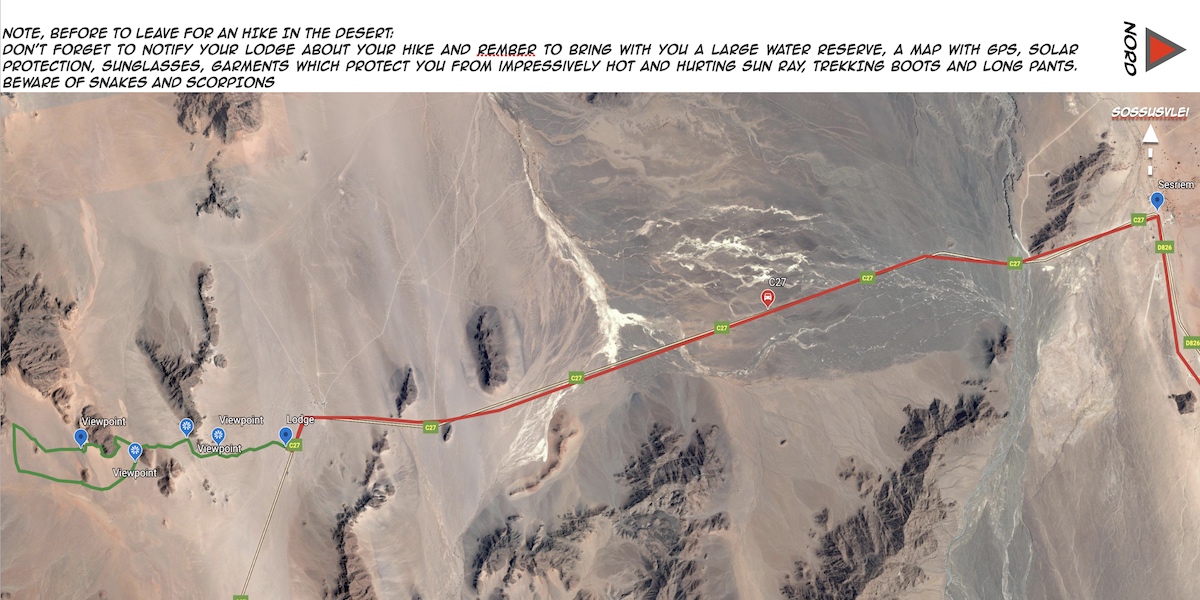
We had noticed our lodge is really not far away from Namibrand Nature Reserve, which we had contacted prior to our travel to check chance to organize a day visit. Unfortunately in 2019 they haven't implemented day visitors access yet, therefore we decided to have an hike in the areas just outside the Namibrand. As the day before we spotted the famous Namibian's "fairy circles" in the ground over the landscape around us we were excited to head towards such target and look closer.
Such circles are a natural phenomenon, still unexplained and subject to various speculations; probably they are the result of an interection of multiple factors like termits colony, plants ecosystem, underground gases and terrain composition.
Namibrand is the most famous area where you can admire this phenomenon, both for intensity and quantity of circles and because the reserve has skillfully exploited the phenomenon by making it a tourist marketing action.
NOTE, before to leave:
don't forget to notify your lodge about your hike and rember to bring with you a large water reserve, a map with GPS, solar protection, sunglasses, garments which protect you from impressively hot and hurting sun ray.
 The first section of our excursion was the same as the first we did on the day of our arrival, but as this time the sun was rising and not setting we had the chance to admire the beauty of these rocky dunes in a new light.
The first section of our excursion was the same as the first we did on the day of our arrival, but as this time the sun was rising and not setting we had the chance to admire the beauty of these rocky dunes in a new light.
Even though they are now familiar (we had already been here, along these first paths, in 2015) every time their magic fascinates and captivates us.
We walk the winding path that climbs towards the unknown of the desert: between us and the Atlantic only dozens and dozens of kilometers of desert, the mellifluous sea of the Namib.
The scenery is wonderful, rocky plateaus and ocher valleys stand out on the red sand waves, where proud oryxes roam in search of the shade of sparse bushes and solitary acacias.
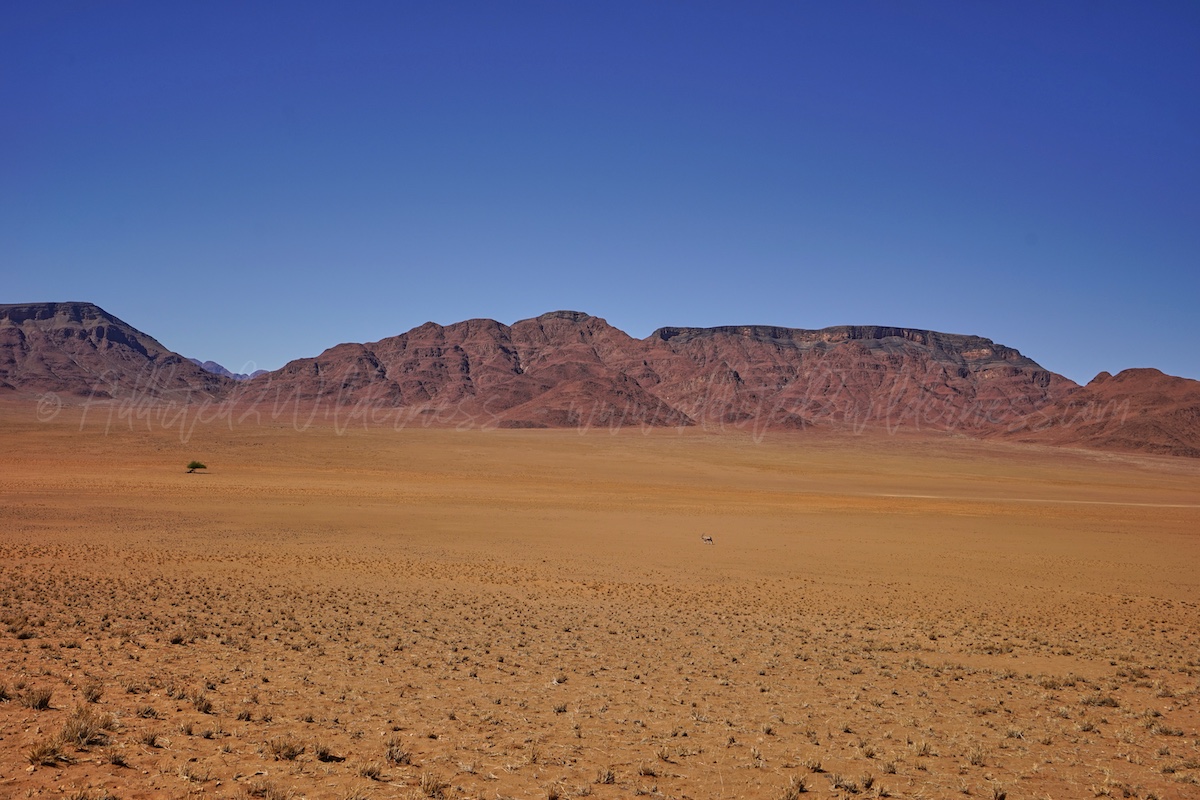
After a couple of hours, spend in a tough hiking due to the sand and sun becoming hotter and hotter, we finally reach the "fairy circles"!
The landscape is so amazing that we haven't the feeling the hike is becoming so strenuous as it actually is. The sun during the morning is turning so high in the sky that we are literally roasting ourselves under the rays. We keep on heading the horizon, the next dune, the next mountain, the next bend in the path to seewhat behind.
We proceed non-stop, as in a sort of trance, bewitched by this incredible landscape. We find ourselves in front of scenarios of a thousand golden colors, mountains set on fire by the light and heroic animals around us. Only the horizon to guide us.
A look here and there at our interactive gps map and we understand that the distances are enormous and on these paths we proceed discreetly but certainly not in a hurry. Suddenly we realize that the sun is cooking us to perfection and we try in every way to cover every part of the exposed body. The desert of epic adventures is not hyperbole, it is truly a place of surreal beauty, but truly extreme.
The rain covers of the backpacks help us to protect us from the sun, but with these on it seems to be in a Turkish bath, with temperatures higher than a sauna and lower humidity!
we decide to have sufficiently explored this magnificent area and to give the return turn to our loop.
In this self planned loop of about 6 hours we experienced wonder, fatigue, enthusiasm, pain (the sun burns!), admiration (for the local animals). All this with a sense of blissful solitude, peace, given by an incredible communion that only one of the apparently most extreme, but magical environments in the world is able to give.
A strenuous walk but a mythical satisfaction!
Naukluft Mountain Zebra Park: Olive Trail (Naukluft Mountains)
The very next day has been one of the days we keep in our mind with a red circle on the calendar, within the book of most epic adventure.
Early morning we wake up and, after a wonderful breakfast with the first sun lighting the Namib dunes as background, we are geared up with all our trekking stuff and photo devices to drive on the amazing C-27 route through the majestic landscape of red dark rocks, yellow grasslands and pink dunes, heading south.
The panorama is so beautiful: a strip of gray gravel, pointed by lonely acacias, runs in the middle of infinite mix of desert land and grazing lands where herds of oryx and wildebest are roaming. The air is still sparkling fresh and the feeling is wonderful.
We drive till the cross with the connection road D-845, which turning east is connecting us with the C-19, which tuns north heading back into direction of Solitaire, but actually for us is the road towards the D-854 which brings then into the core of the Naukluft Mountains.
All the roads are passing through nice backgrounds with wildlife and with cattles.
Once you turn right onto the D-854, the route begins to climb a little as the Naukluft Mountains slopes begin to be more marked.
After a bending ascending section of the road, the core of Naukluft Mountains is standing out to the north and farms are located in the hilly and flat area where water springs give life to the world around.
Birds of prey mark the path, perched in the trees along the road, near the farms.
1 hour and half approx later we are at the gate of the Naukluft Mountain Zebra Park, with the barren and wild mountain massif just standing over us.
Entering the gate we approached one of the most reckless, risky and memorable of our adventures.
A dirt and rocky path, for off-road, which runs on the slopes of Naukluft, leads us to the actual access to the massif. Some encounters with curious birds that populate these lands and in short, we are at the park reception.
A photocopy of a rather rough map, some of our questions, followed by a brief explanation, and so we decide to retrace a very short journey back with our off-road vehicle to reach the parking area where the Olive Trail starts! Here below a self-designed map based on openstreetmap overlapped by our footprints on the trail:
Backpack on our shoulders, a few minutes to compare the map on paper and the one we have prepared on our GPS, in the company of frenetic weaving birds, and we set off along the path that passes on the left of the mountain slopes (on your right you will find the return path, being a circular loop).
Climbing quickly, the trail between savannah shrubs, wild olive trees and acacias set among red rocks that tell of an ancient geology, quickly leads us to have a view that overlooks the semi-arid expanses that lie at the foot of Nauklufut Mountain.
Starting with thermal clothing (the temperature drops drastically at night) we soon find ourselves with a t-shirt and roasting ourselves again under the scorching sun. The burns in the arms, remedied the previous day during the trek in the desert, are definitely painful, but we are so charged for this new adventure that the meters of hard ascent run off quickly. Warning: even if you feel very hot, always wear long pants and hiking boots: some of the deadliest snakes in the world live in this area!
Almost without stopping (a few breaks for photos) we cross the hill and find ourselves on a stony plateau, drawn by warm, ferrous colors, dotted with heroic trees and shrubs. Out of this world, on a wild planet, narrow valleys alternate with expanses of infinity and canyons dug in eras of turmoil and the unchanging kingdom of nature, the earth is rugged, wild.
It is that Africa which you do not imagine before going to Africa, but it's the icon of the African landscapes that you carry inside forever, an indelible symbol that already exists at a primordial level in our unconscious.
From the plateau, our view can sweep far and have a good view of the surrounding slopes, but we fail to spot any Hartman Zeebra, although we do hear some hoofs in the distance. Mountain zebras are extremely shy, small groups are endowed with a strong and wild personality, they are animals that deserve great respect and admiration for their indomitable ability to adapt and challenge such rugged and harsh landscapes.
After having followed the top of the plateau for a while along the crest, the path quickly flows into the small canyons, where the water of the summer rains draws the Naukluft Mountains and with its ephemeral path brings the magic of life up to the fire dunes of the Namib.
The path is adventurous and challenging, the rocks, the heat, the beating sun, the steep and steep passages, the attention to possible lethal snakes, make it exciting and memorable.
Much of the route, which is a loop that leads back to the starting point, is carried out inside the canyon carved by one of the ephemeral tributaries of the Tsauchab river that many kilometers to the west creates the magic of Sossusvlei.
Depending on the points, the walls of the canyon become narrow, high and the indefinite path often forces us to resort to our GPS and map to find the best route.
Often even this is not enough and other small tributaries that have dug in the opposite direction to our grafts of other canyons, create deceptive paths. This, together with the total lack of indications (practically finished on the top of the plateau) and the absence of a real path (the path is the river bed with even quite high jumps between the boulders), makes it difficult to orient yourself and leads to take the way proceeding by attempts.
The landscape continues to be fascinating, huge trees and solitary Quiver trees with candid white bark and green fronds arise where the ephemeral river canyon has generated loops against the red rock, all surrounded by a strip of deep blue open up there between the ridges of the plateau.
While we were into the core of the canyon, we started thinking about leopards presence... the environment looks like a leopard's one and the loud noises similar to walking over the rocks coming from the plateau crest are something which light up our thinking about it.
Just a moment and exactly in the middle of the path, we find a mountain Zebra very close to us... or, better to say, we find what's left of it. There, over a flat rock, like a sacricial altar, lighted up by sun rays breaking the dark shadows of the bottom of the canyon, it's lying the torn paw of a zebra ...
hilarity and worry mingle and the difficulties given by the path almost completely to be invented step by step become greater. We try to proceed faster, the steps on the rocks on the ridge continue to follow us and, knowing that there is no path up there and there are no other hikers (we noticed this when registering for the path at the reception), they become more pressing.
We go back and forth several times, along deviations of the canyon that lead us astray, we jump from rather high rocks, probably small waterfalls created by ephemeral rivers, in order to keep our course. We can't go back: retracing the loop in reverse would mean climbing the plateau from the steepest and most difficult side at this time of day, probably being in full darkness still wandering among these mountains.
We continue fast, but bewitched by the wild landscape, by the beauty of solitude in the middle of the most harsh and true nature. We know that the chains are waiting for us almost at the end of the path, or rather at the end of the canyon, but they shouldn't be anything to worry about, at least, so it seems to read up on paper and according to the very few instructions received at the park reception in response to our questions.
by now we should be there, the canyon is getting narrower and the walls steeper, while our supposed travel companion (the leopard!) continues to scrutinize us from above.
Along this stretch of the route, we find ourselves having to overcome some puddles of water (we suggest you avoid getting wet in any way to avoid serious health risks) where we come across a small army of giant and primordial-looking wasps, we immediately renamed killer wasps.
The path with the pools of water, which is the ephemeral river bed, begins to precipitate rapidly and here are the chains nailed into the rock, suspended above the bottom of the flooded canyon. We stop to evaluate whether it is better to pass along the right or left wall, we feel the anchors, the tightness of the underlying rocks and in the end we decide for the chain placed along the left bank of the canyon.
Laura goes first, Marco follows her. It is not easy to move around with a backpack full of supplies and photographic equipment, hanging from a chain (we do not have safety hooks) jumping against a vertical wall with no supports under our feet, but we manage fairly well. Arrived about halfway, a kind of microscopic balcony allows a stop with feet resting on the ground, to catch your breath and understand how to move along the last stretch.
Laura leaves again. The chain is yielding. A dip in the void for a few meters. A hold, the adrenaline and the strength of her lead her to the end of the path. Marco, frightened by Laura's risk, sets off again. Awareness of the yielding chain, on the one hand, is useful, but on the other hand it leads you to tackle the path with anxiety about a serious problem around the corner.
The overcrowded backpack, optics, cameras, gps tablets, hanging trekking poles ... the chain falls, it seems endless, there are no supports under your feet. Adrenaline makes you do anything, or almost anything. Left hanging with the chain under his armpits after a hard impact with his arms and shoulders against the rock wall, which broke his backpack and made a trekking racket fall and sink into the pool at the bottom of the canyon, Marco managed to drag himself along the completely soft chain until the end of the difficult passage, thanks also to a constant encouragement from Laura, a worthy style of the most fearsome special forces trainers!
Arrived on the other side of this terrible passage (wow what an incredible adrenaline adventure !!!) we stop for a moment ... there are the killer wasps on the other side of the passage, the leopard above our heads, the path that continues for a while and the time that runs ... but we really need a break to take a breath, realize that you are still alive and whole!
From here on, there is a last stretch still in the canyon, but, emerging from the belly of the mountain, the ephemeral river bed tends to flatten and we soon find ourselves crossing the wider path which is the path for 4x4s. We take it and right there we come across a more unique than rare encounter: three incredibly agile and elusive klipspringers disappear in an instant along the mountain ridge in the sparse bush. One for the events, a little for their speed, we have not had the opportunity to immortalize them with our cameras, but, even if elusive, what an incredible privilege! What an unforgettable memory!
Some ailments (Marco has been wearing the signs of the chain for more than a year) but we arrive with pride and satisfaction at the exit of the loop.
Much of the last stretch, to tell the truth, we spent inveighing against the maintenance and reception staff of the park! ... but that's not all!
Back on our pick-up, we walk a few hundred meters along the stretch that connects the Olive Trail to the main dirt road of the park: a pyramid of stones completes the passage. We are stuck! The only way out is to circumnavigate the obstacle by exiting the path and making our way through the bush, taking the utmost care not to cut or puncture the tires.
On the other side a chain with a sign: "the Olive Trail path is closed for out of order and unsafe chains" !!!!
We rush to the park reception complaining that they didn't warn us about anything putting our lives in jeopardy. Indeed, in the morning, when we informed them of our intention to hike the Olive Trail, they gave us a rough map and no information! Very candidly they tell us that although they were aware of the problem with chains, having not been instructed by the ministry to close the route, they were neither authorized nor required to dissuade visitors. Incredible! Madness!
Likewise, we ask for clarification regarding the presence of leopards in the area, they smile at us and tell us that several leopards live in these mountains, which is why there are fewer zebras! Madness and more madness! Let us let our anger with a fresh cidro and laugh at it: All's well that ends well! Memorable adventure to be registered in the register of the best memories.


 Amazing and powerful spirit
Amazing and powerful spirit 



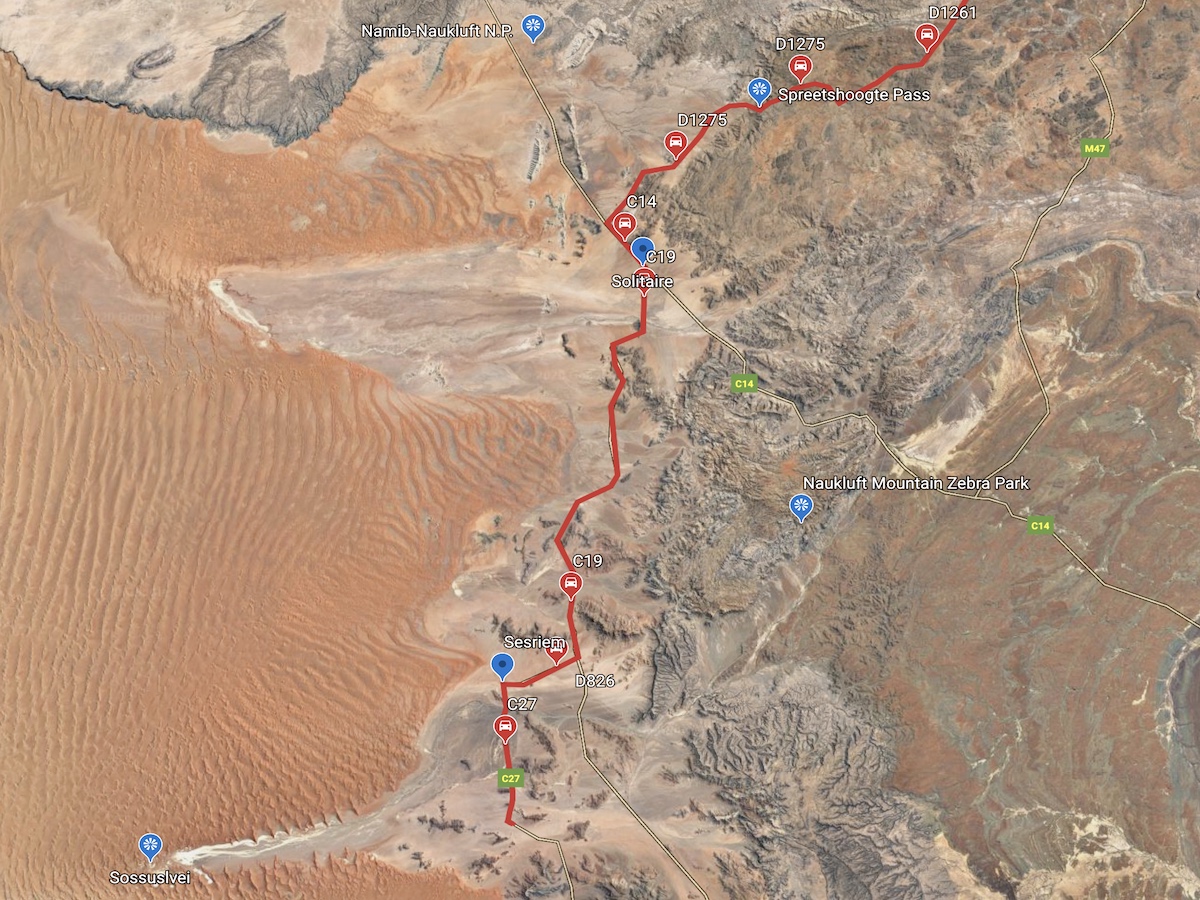
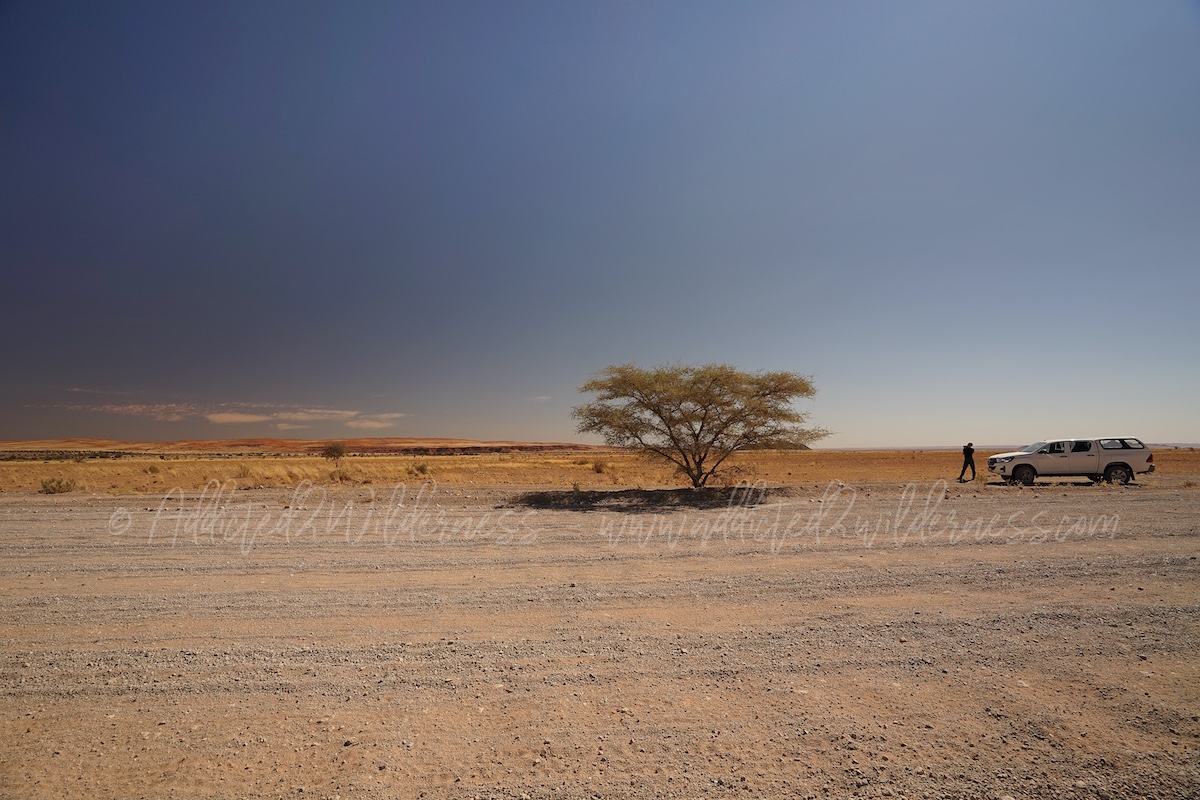
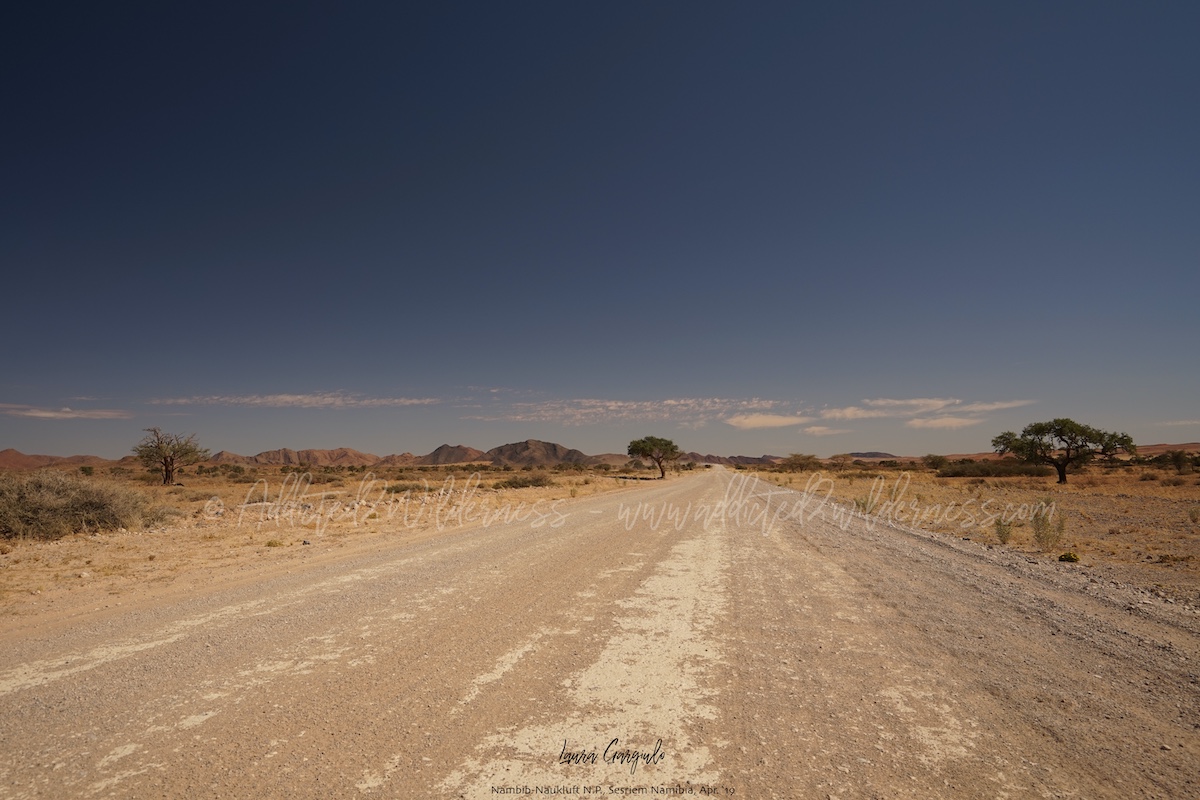



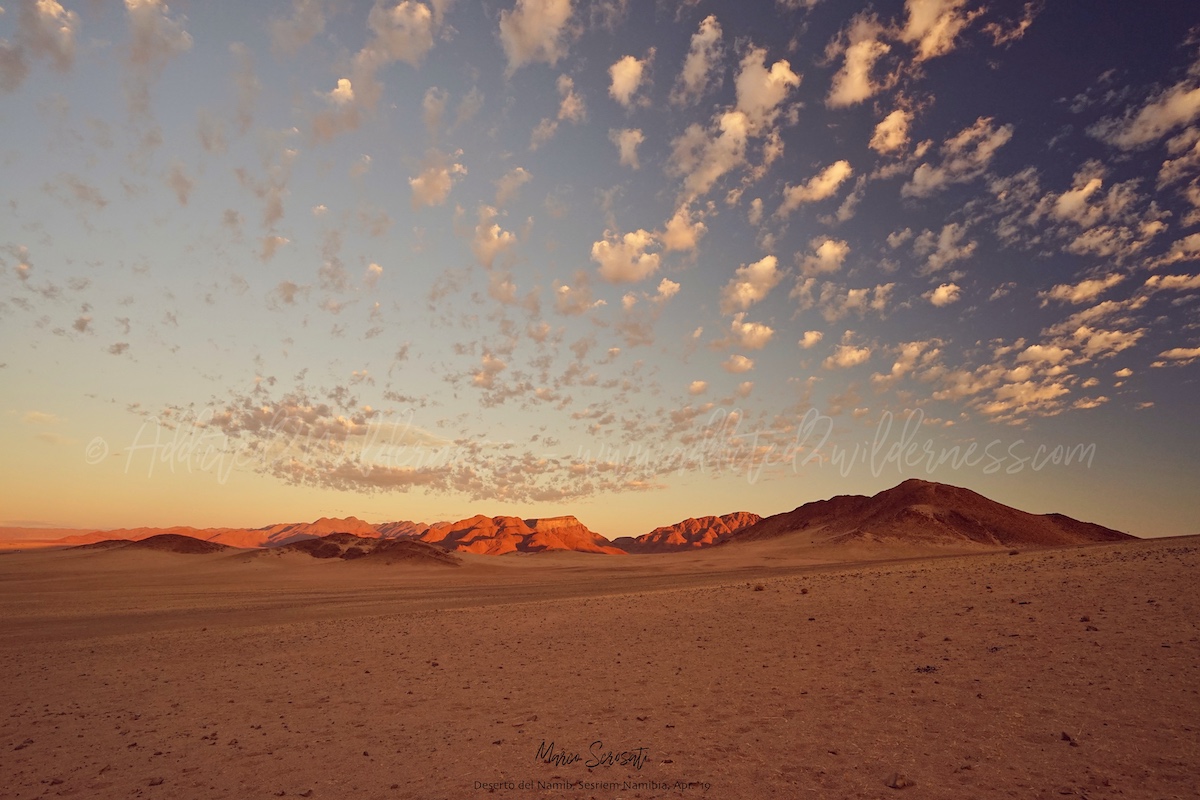



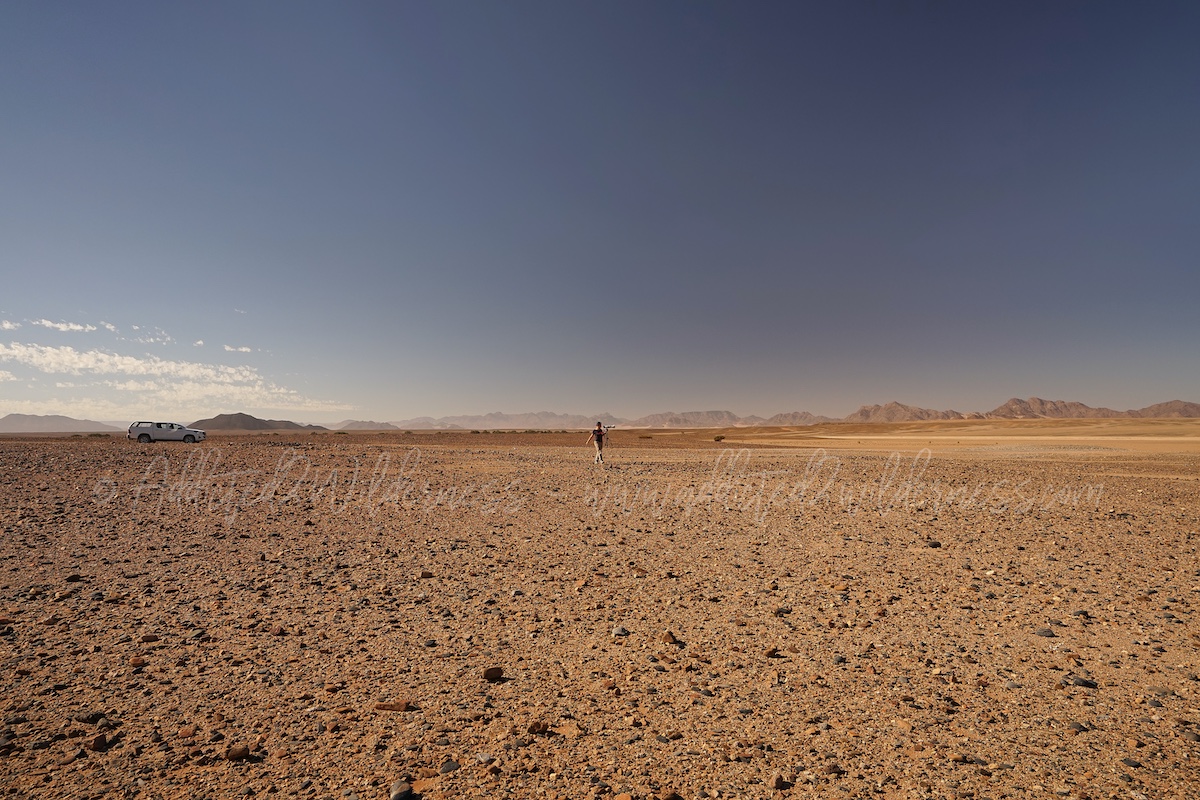

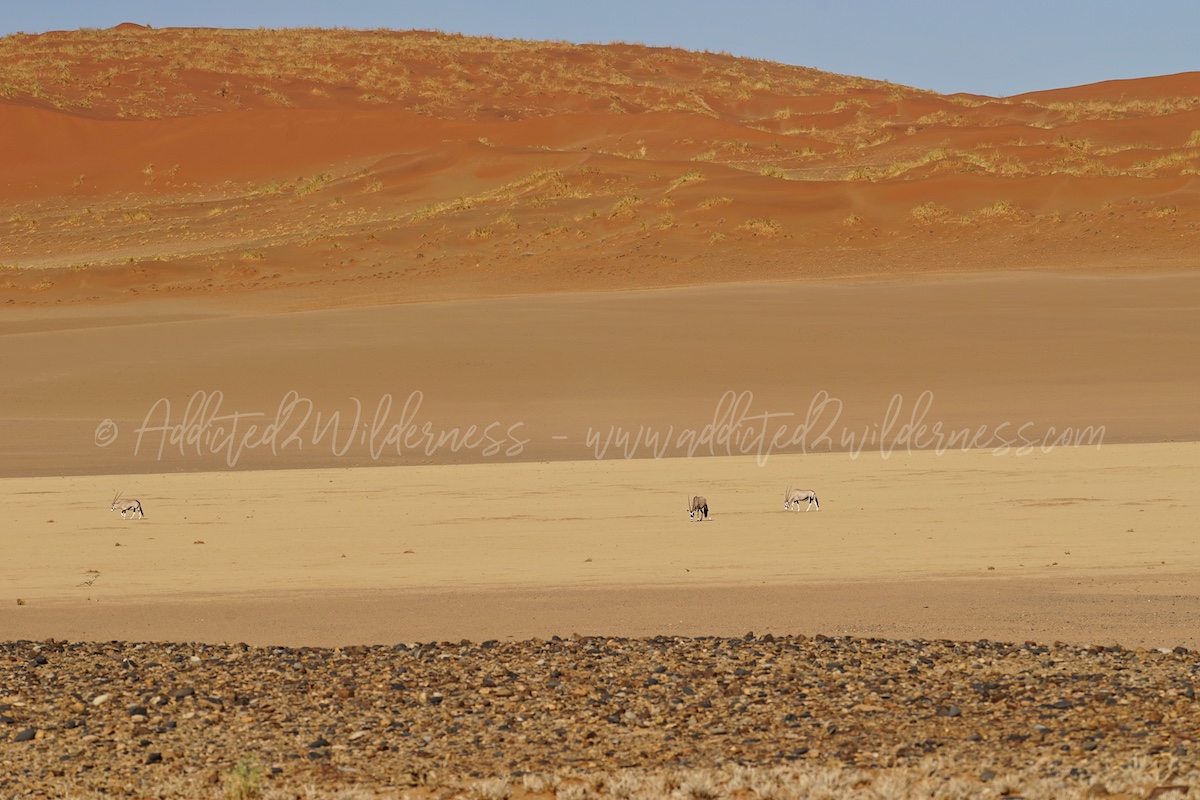
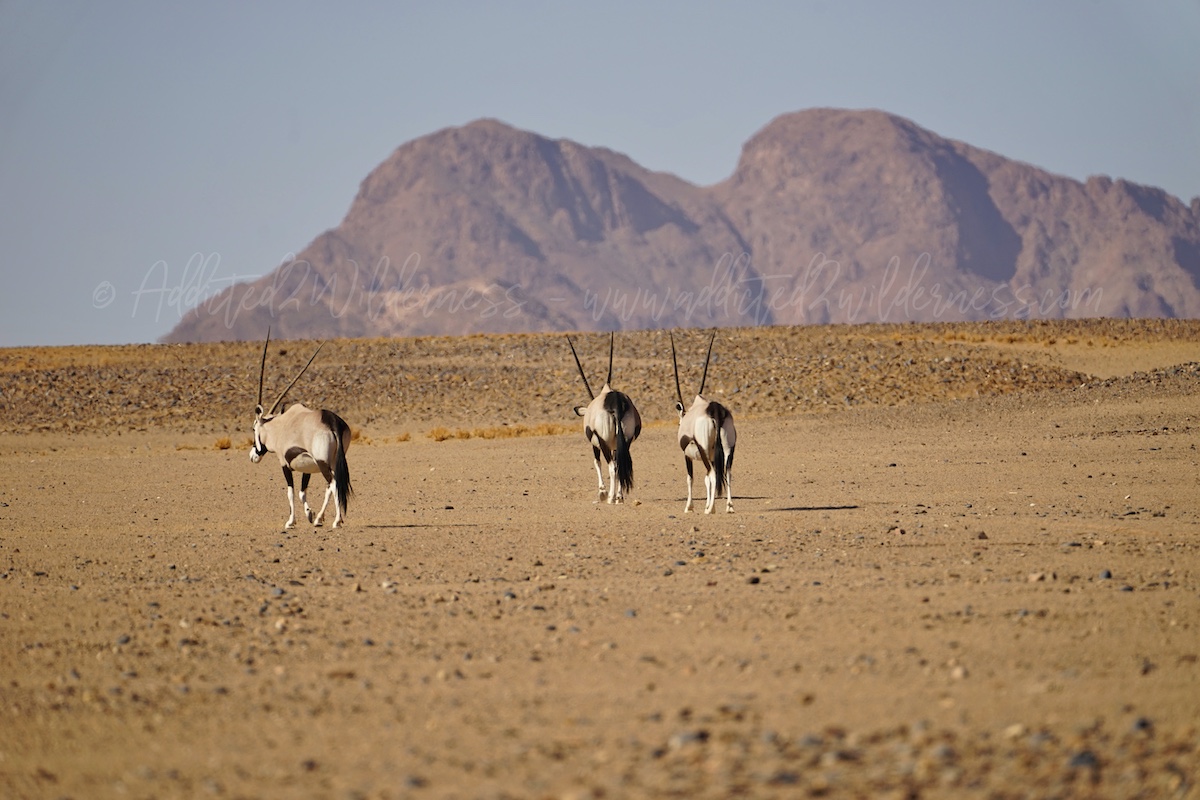

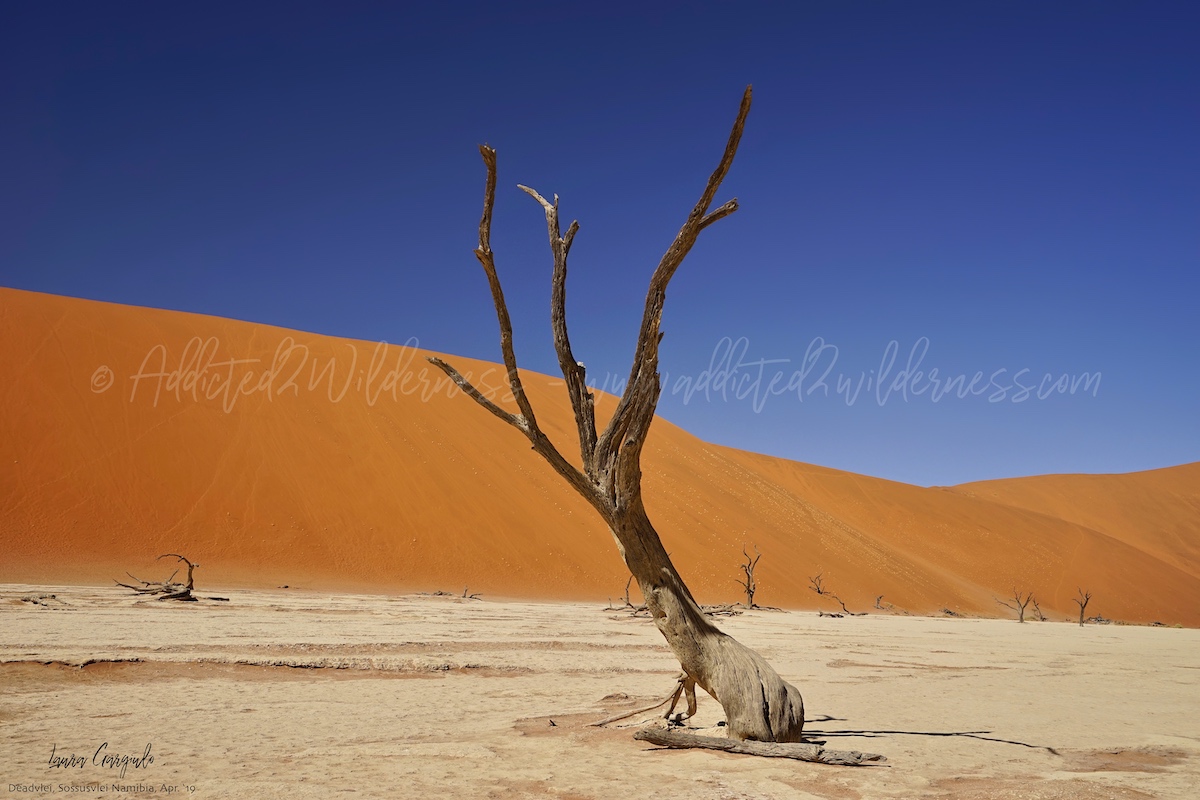
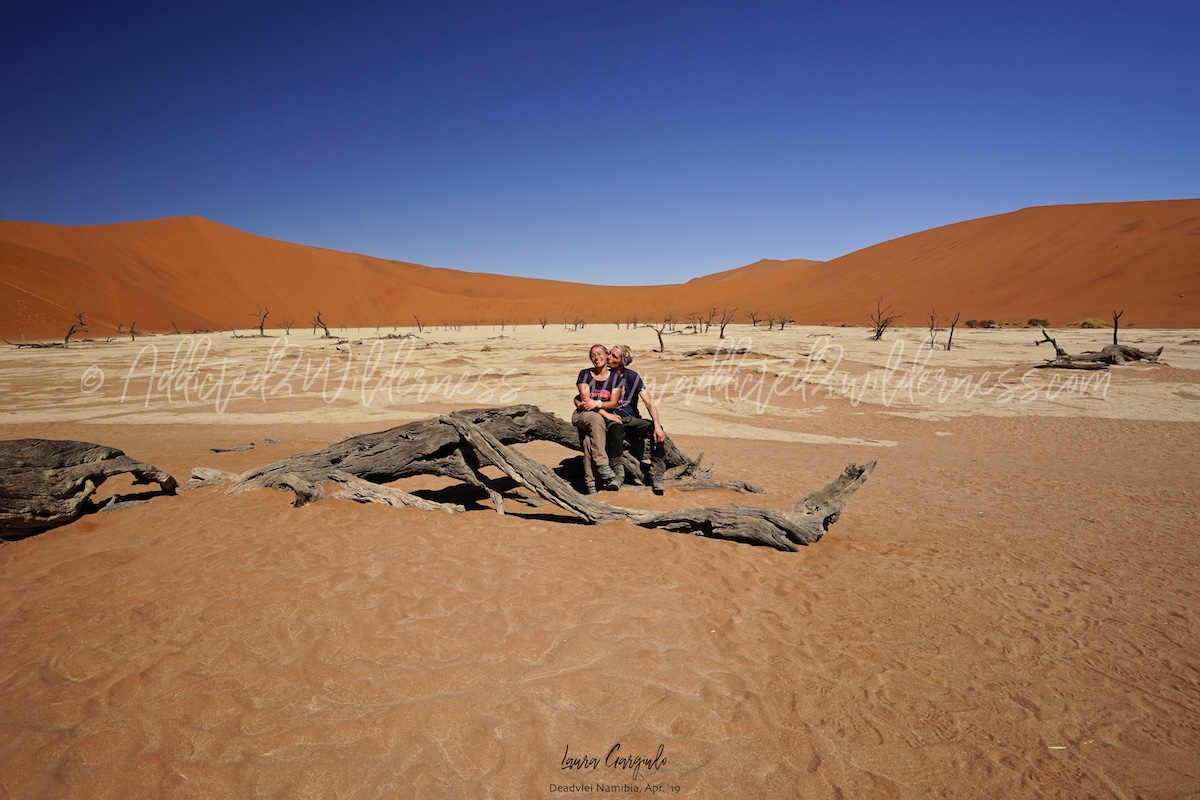
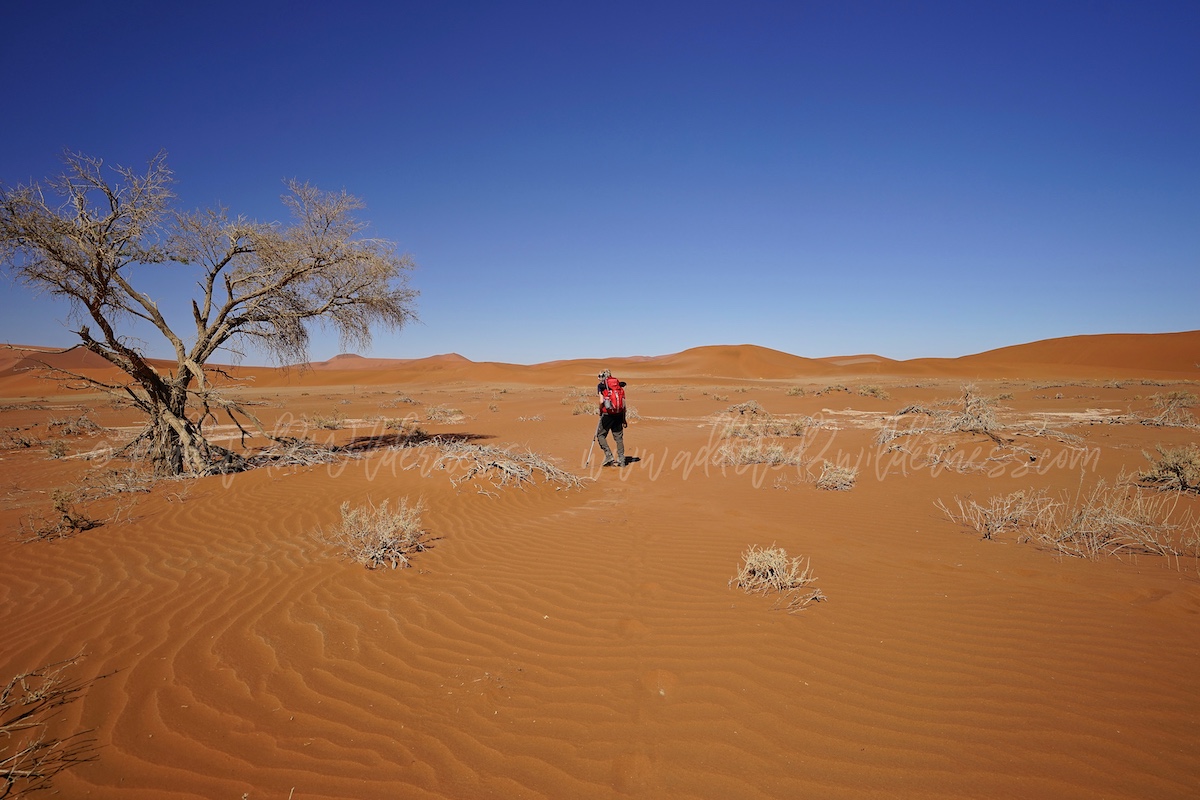
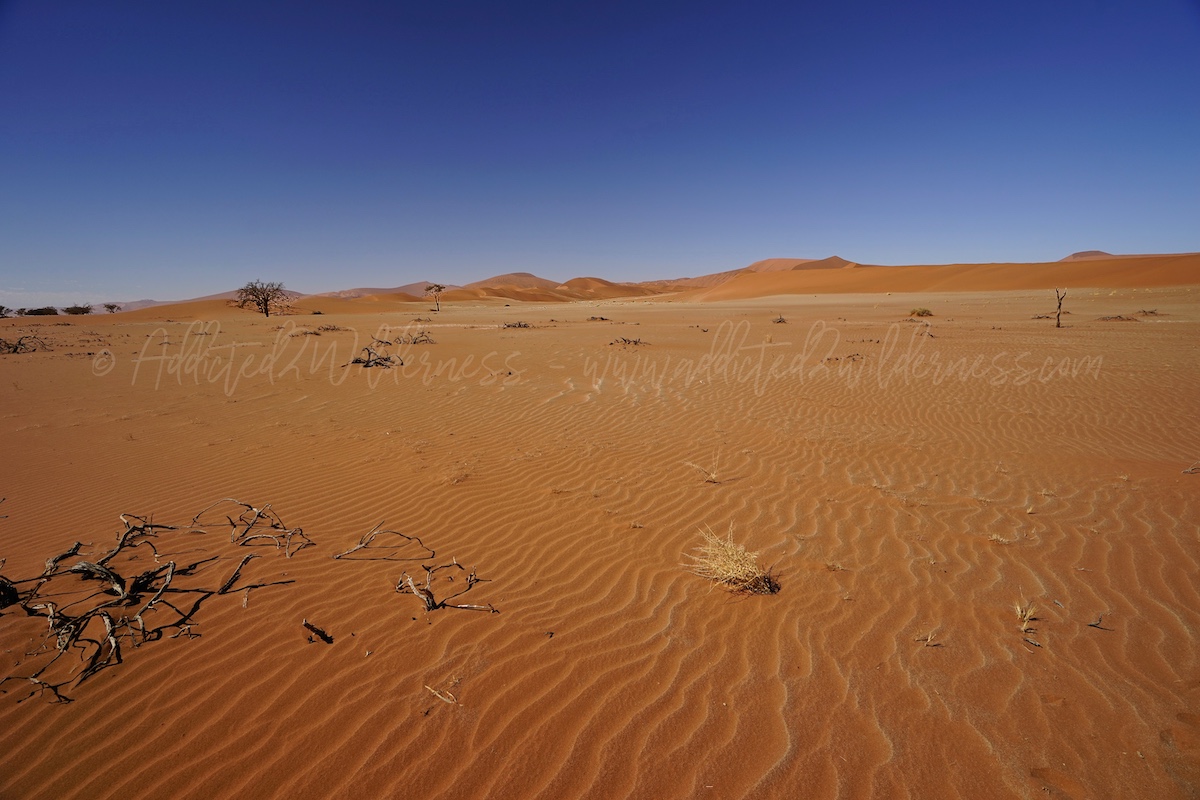
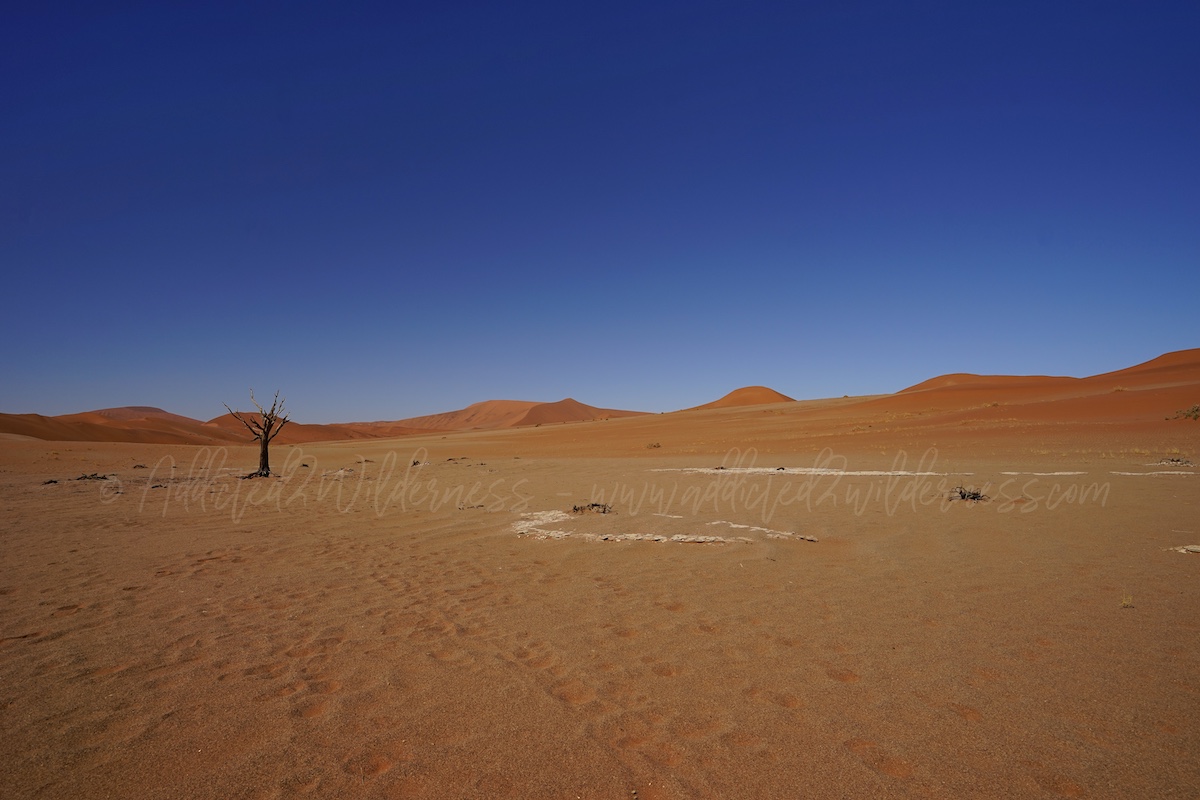








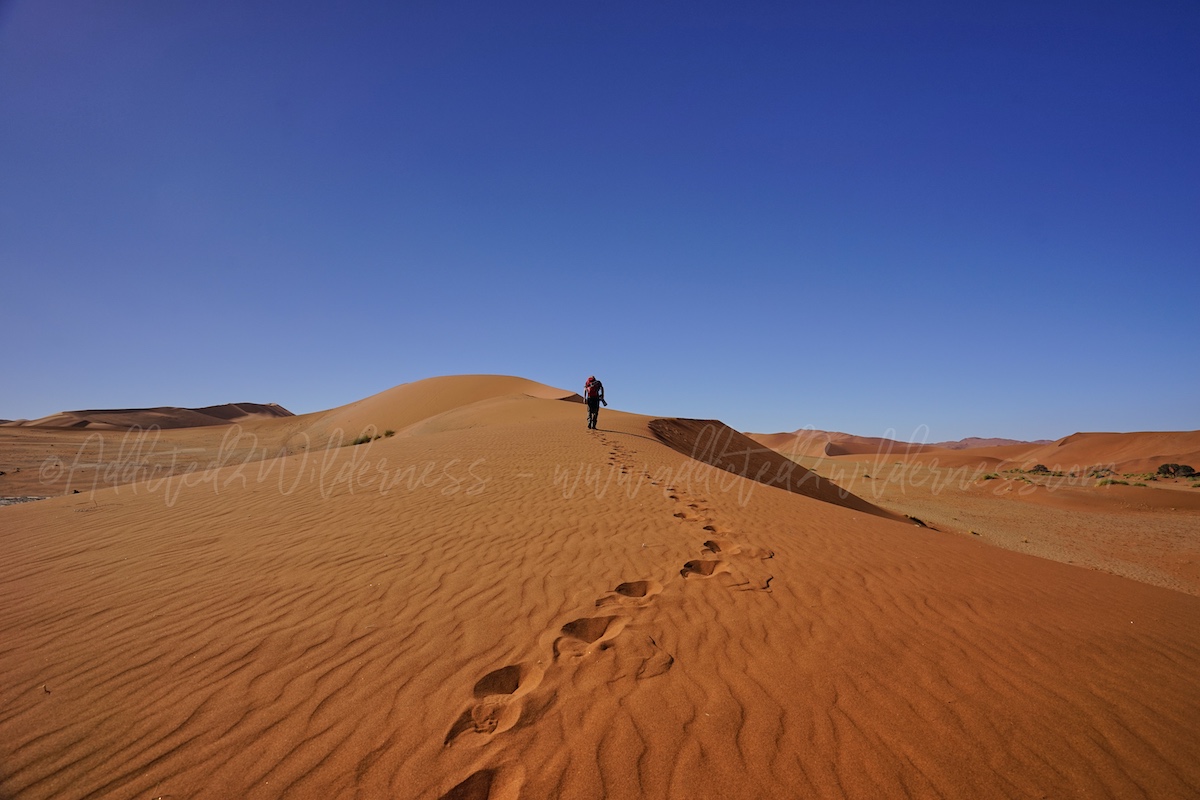

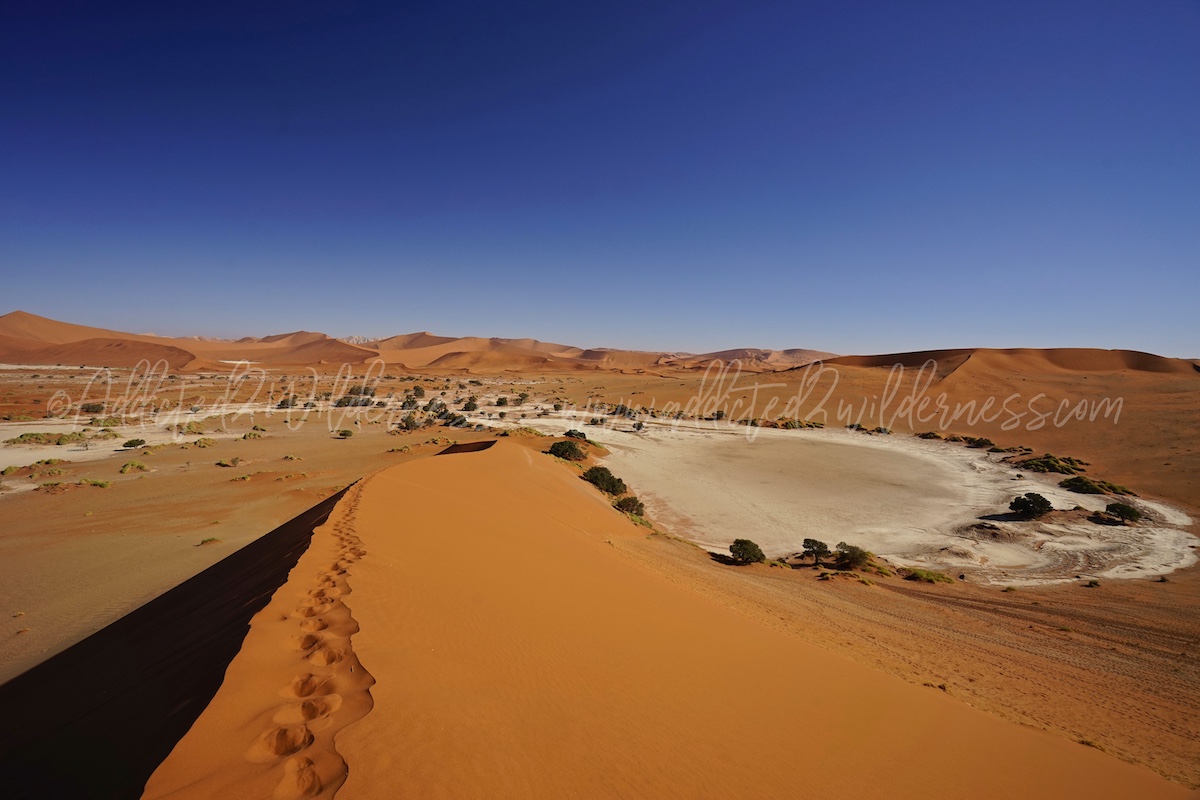

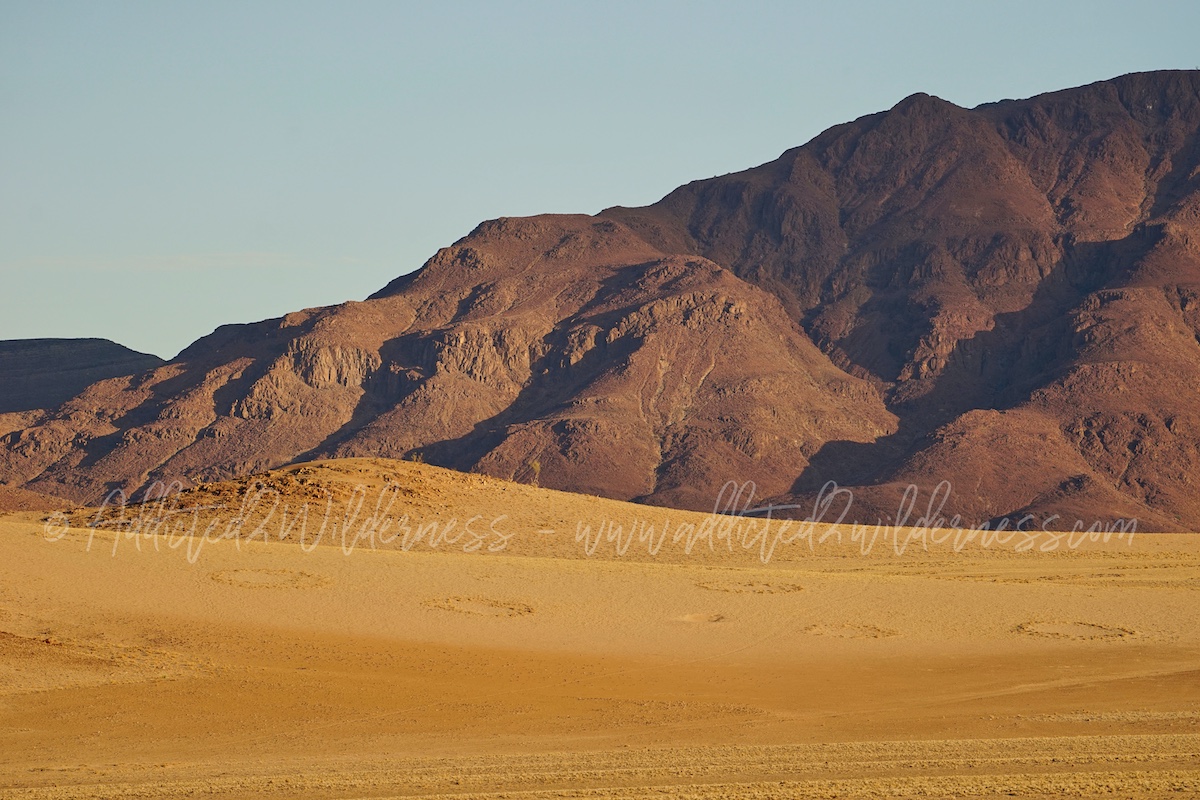
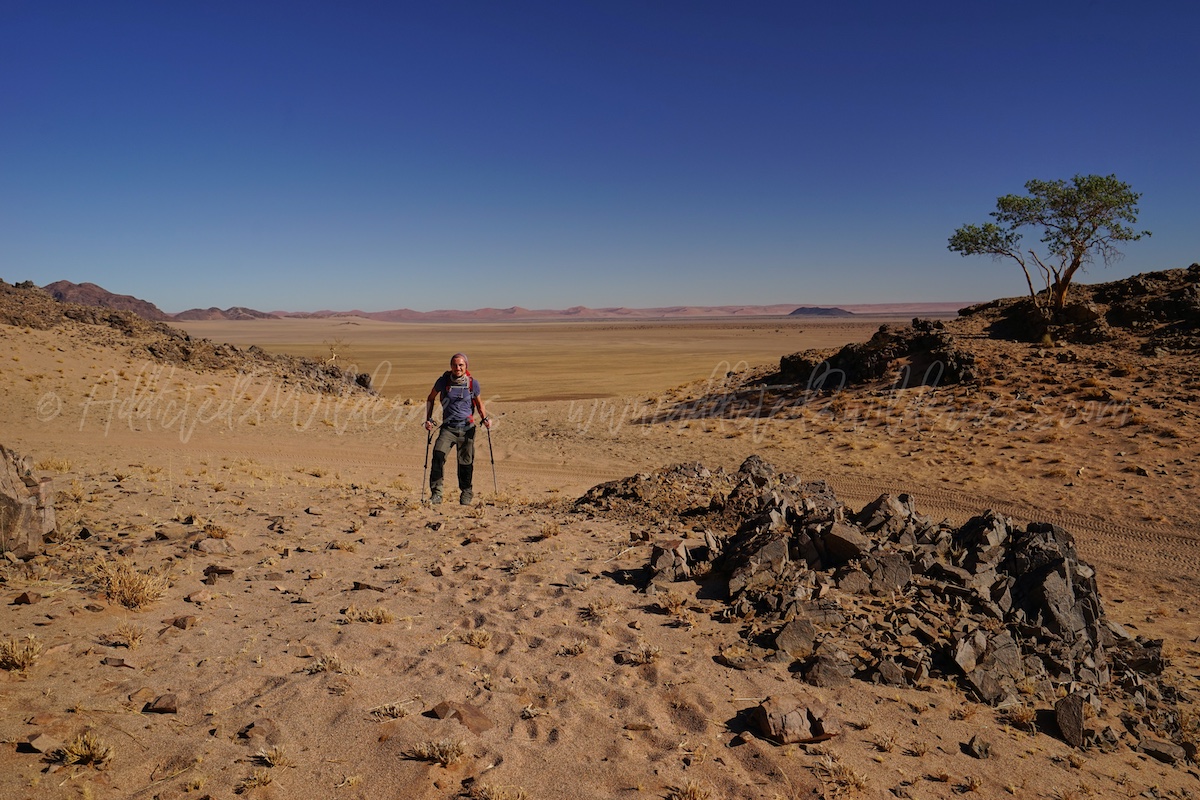
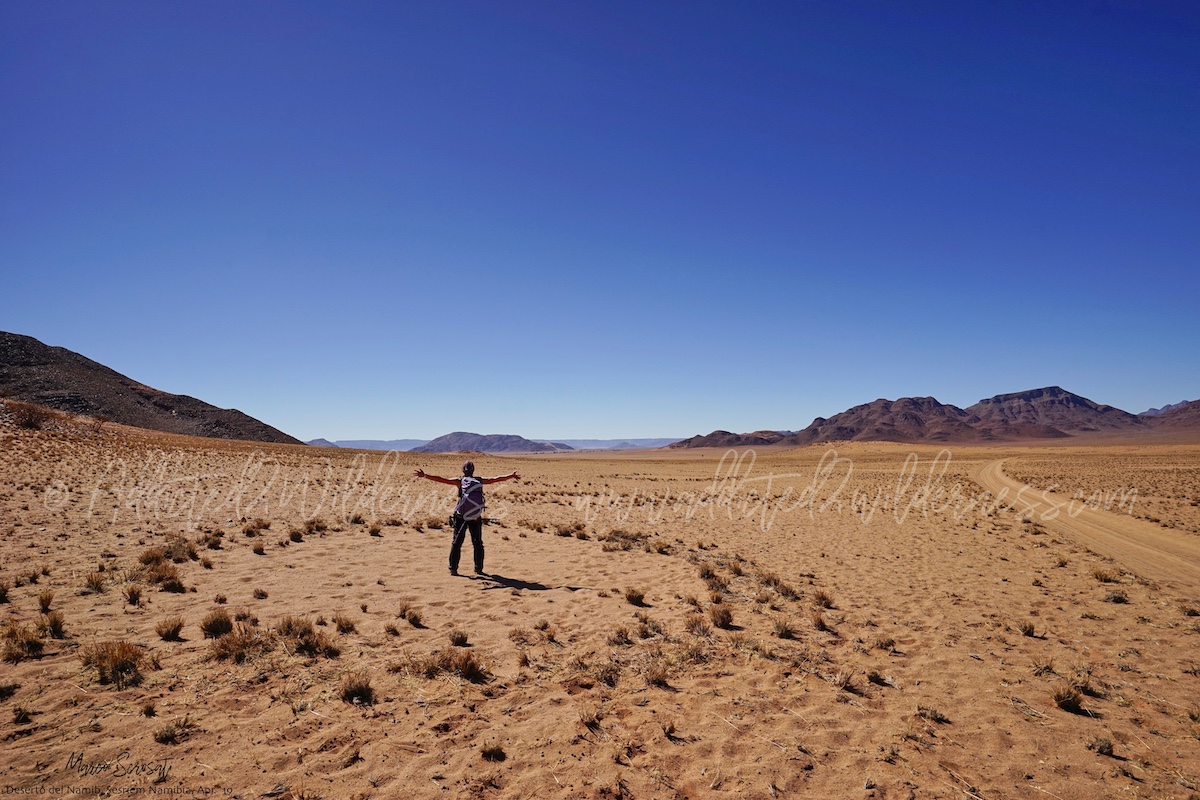
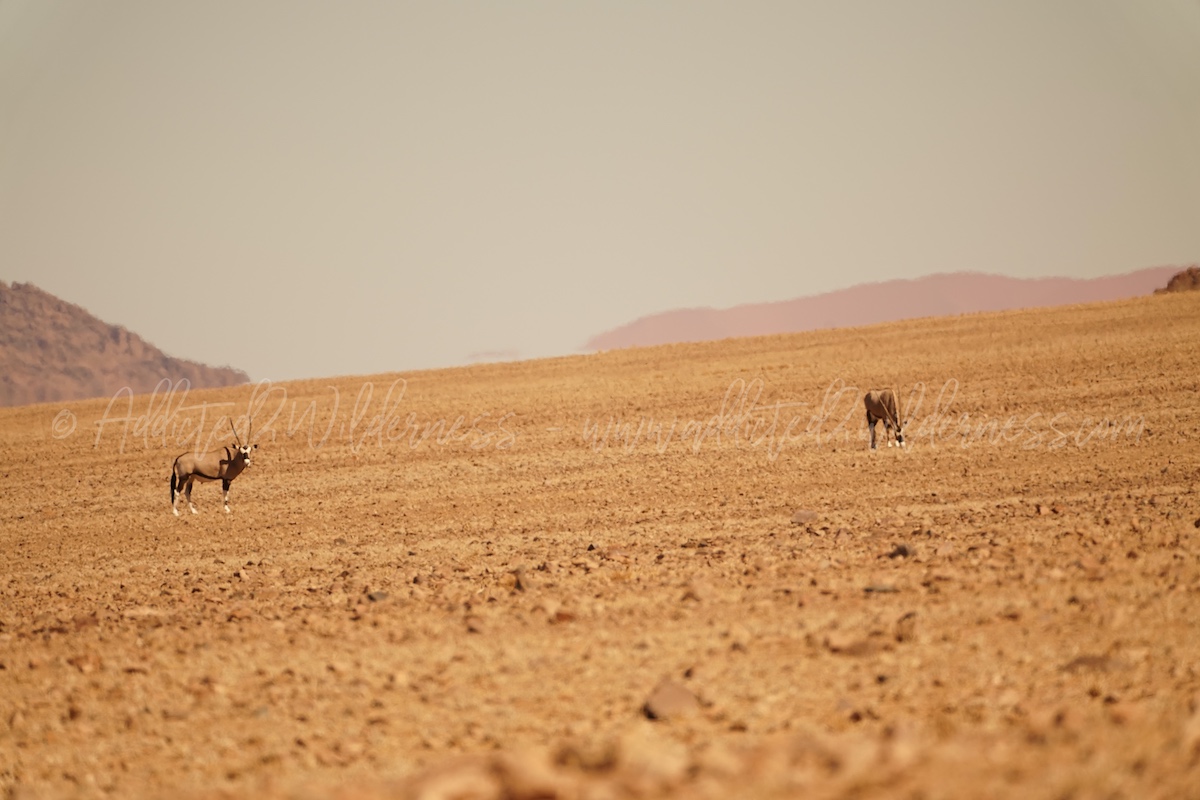
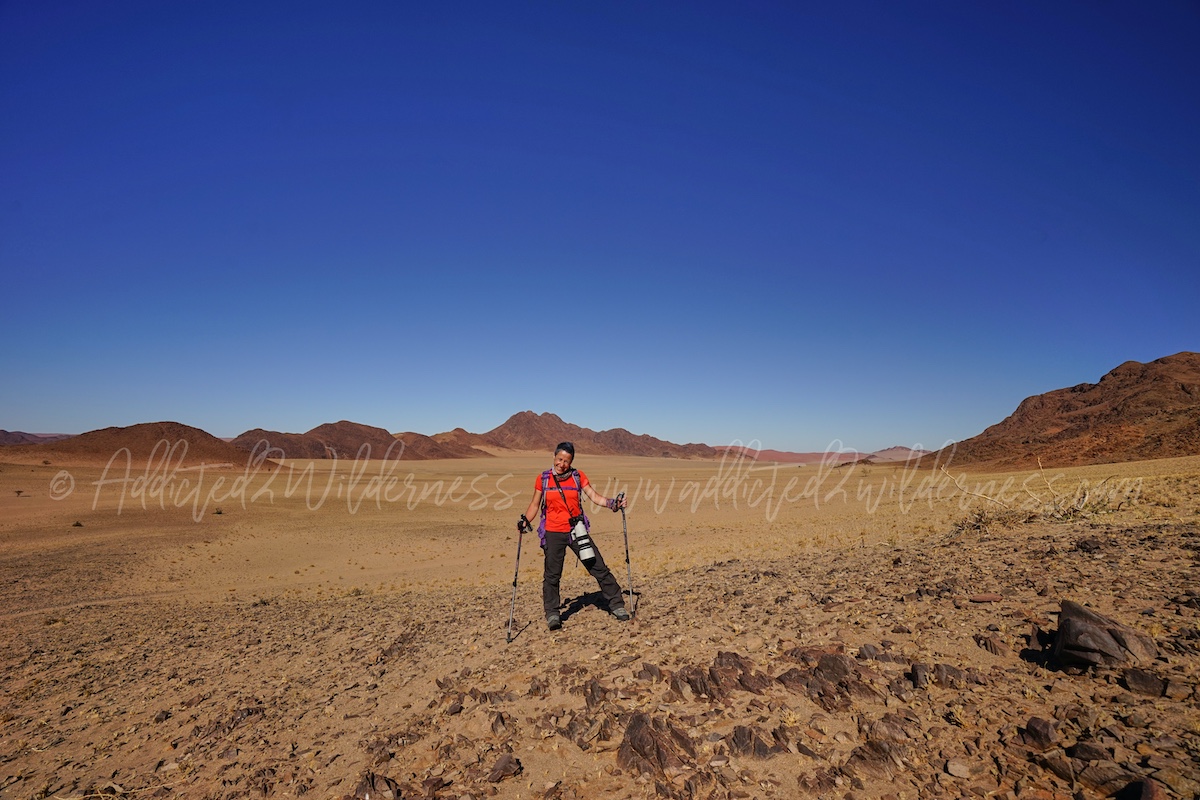
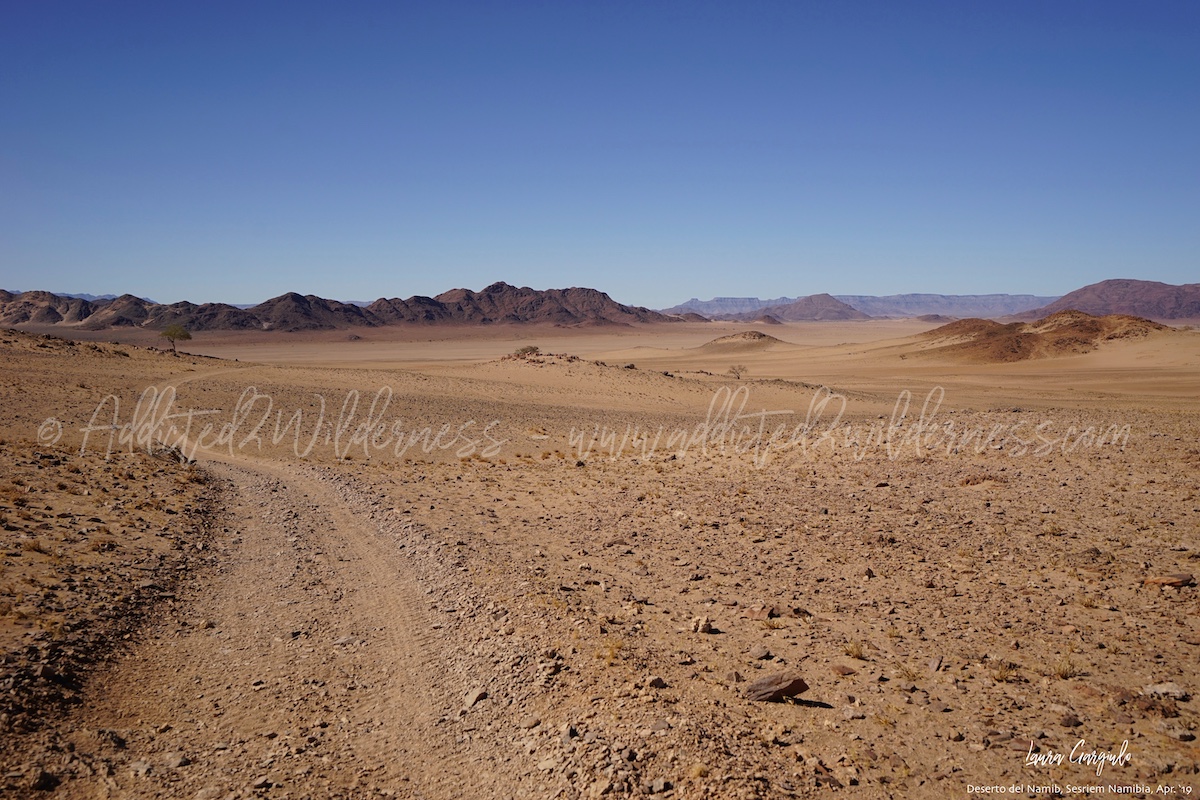
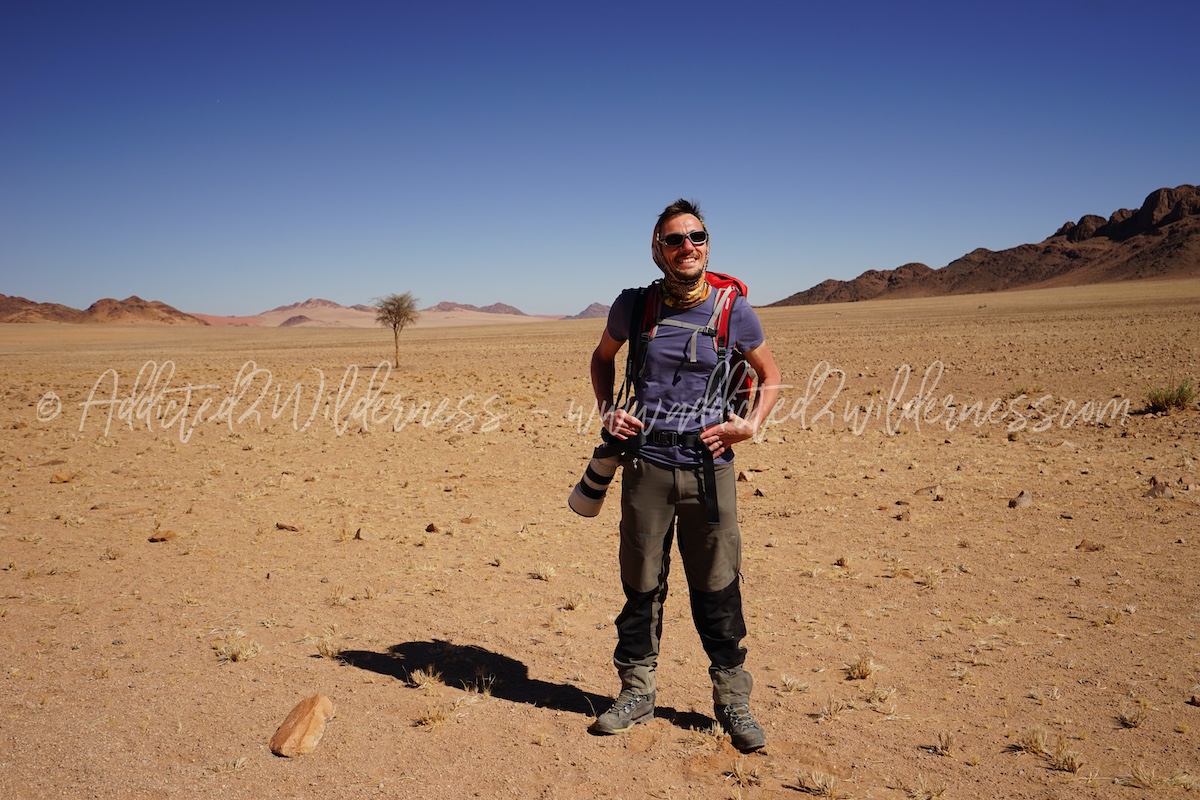
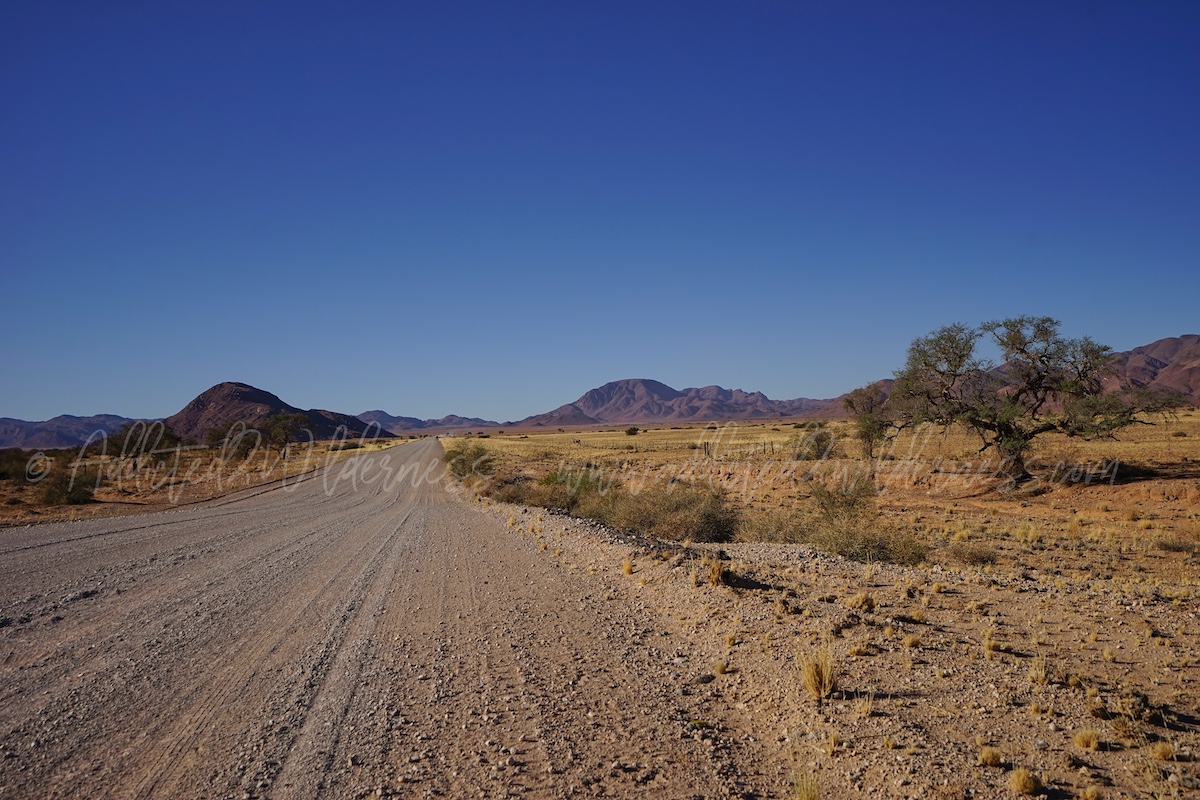
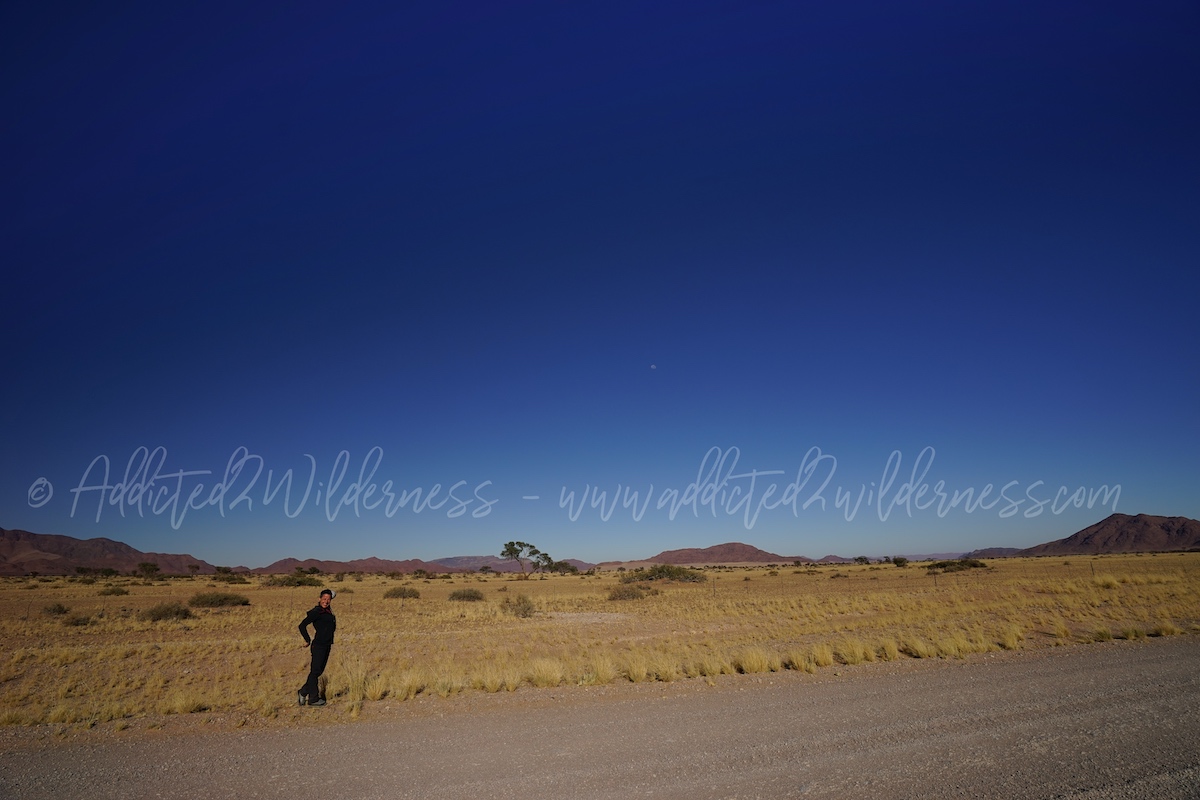

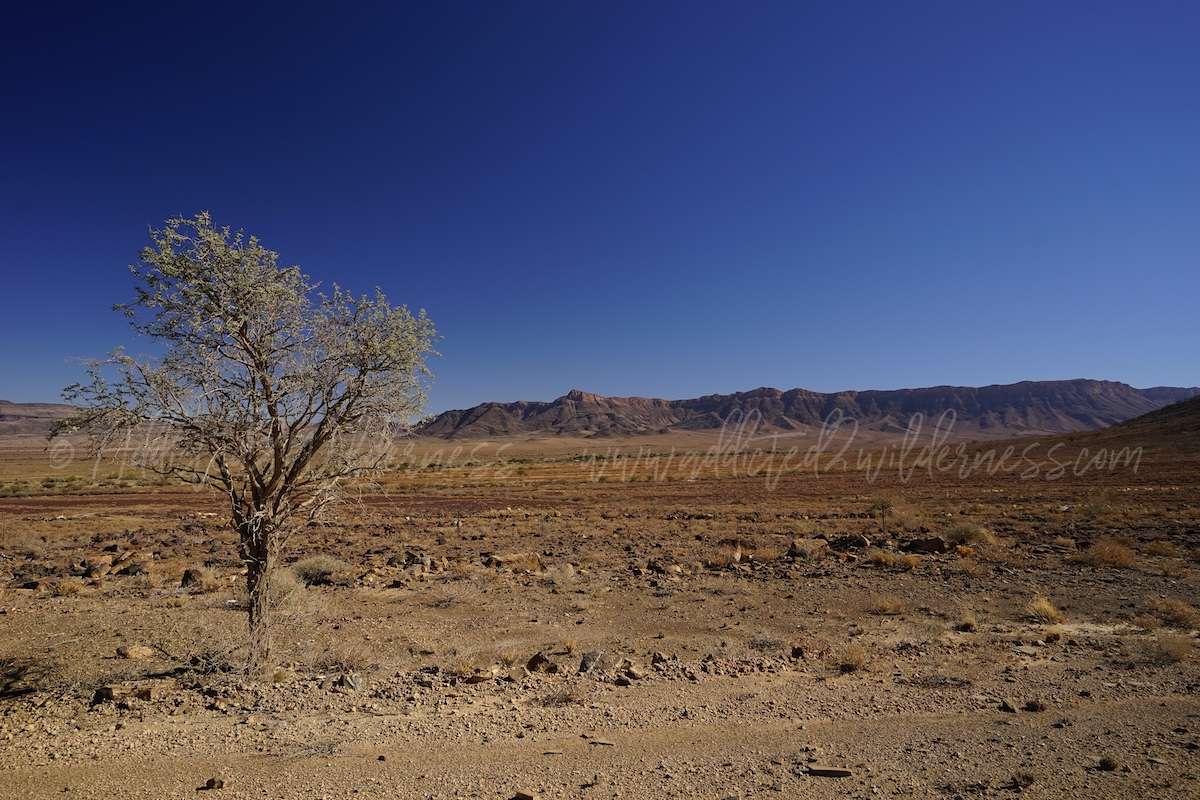
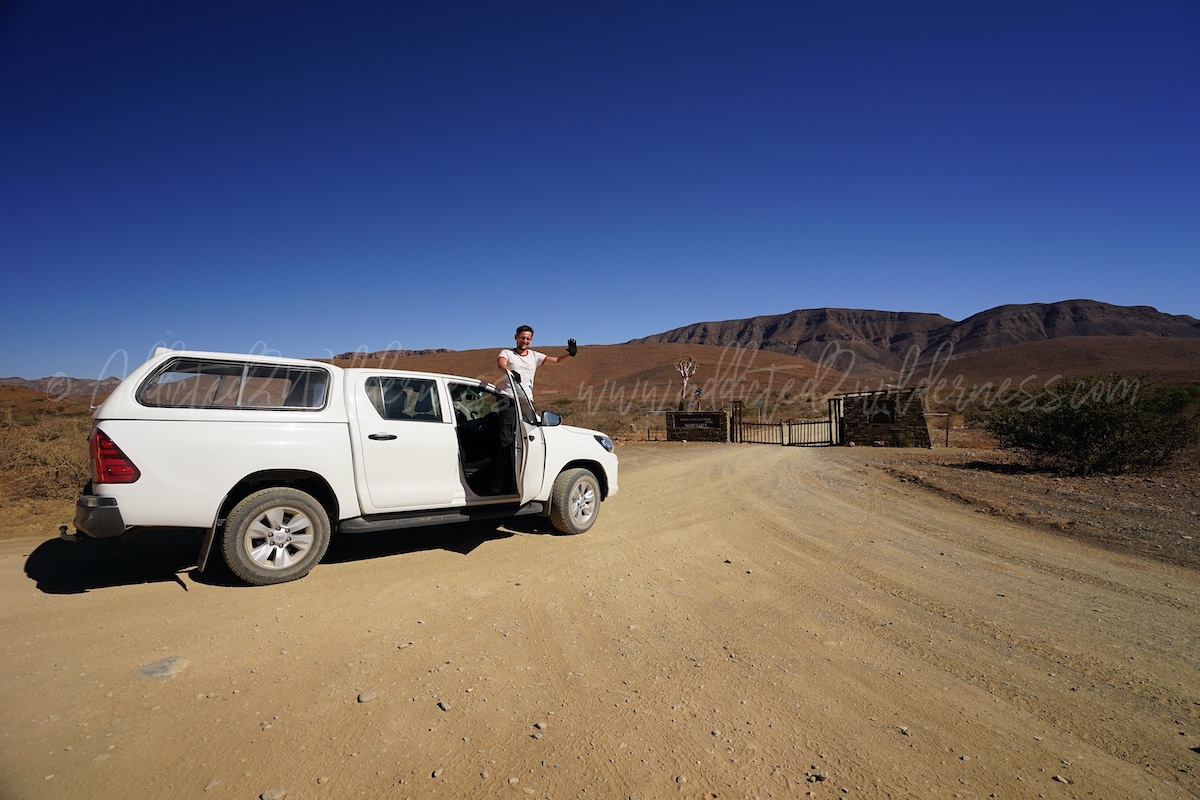

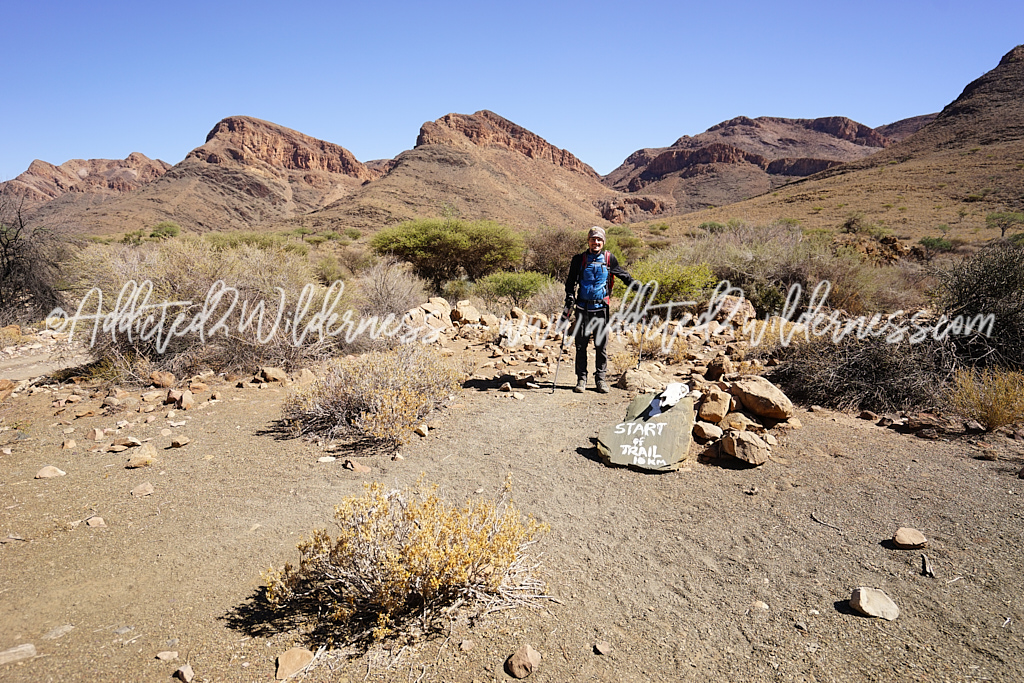

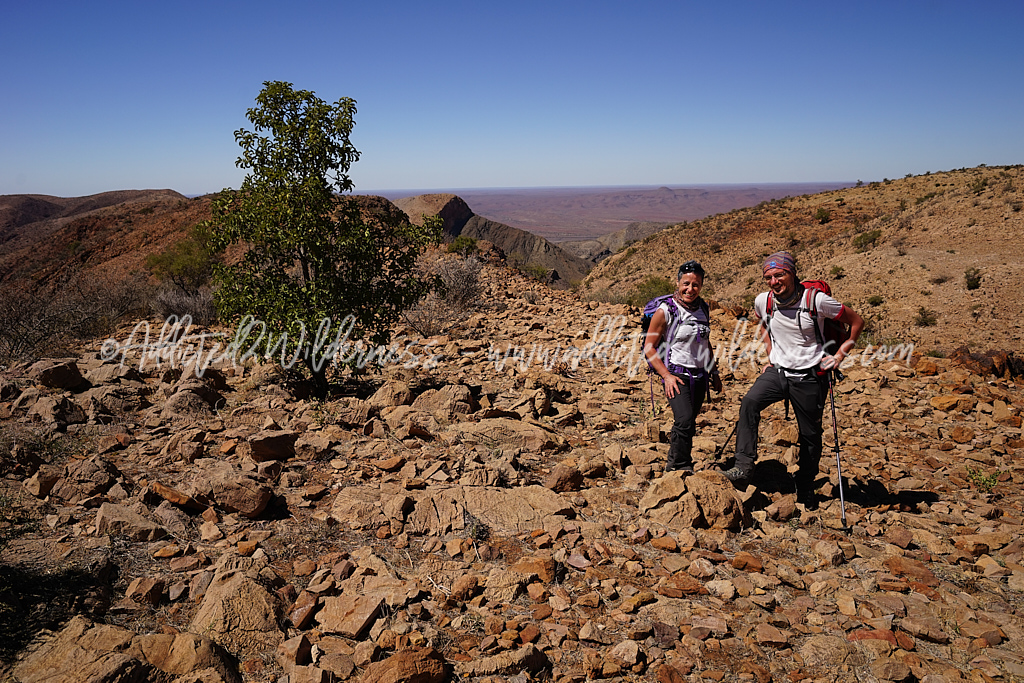
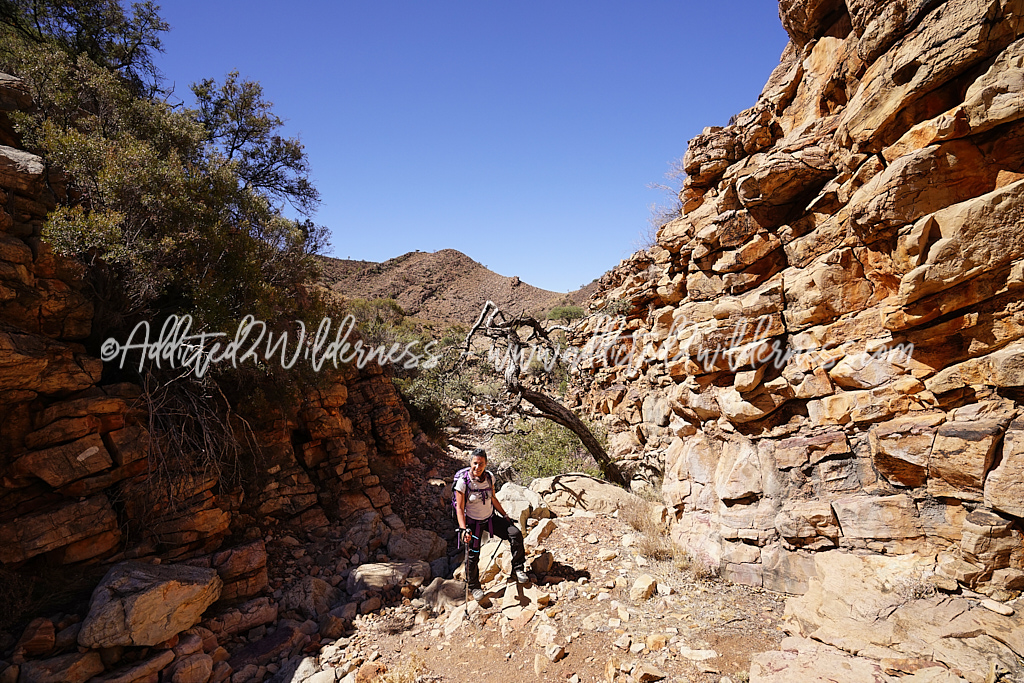
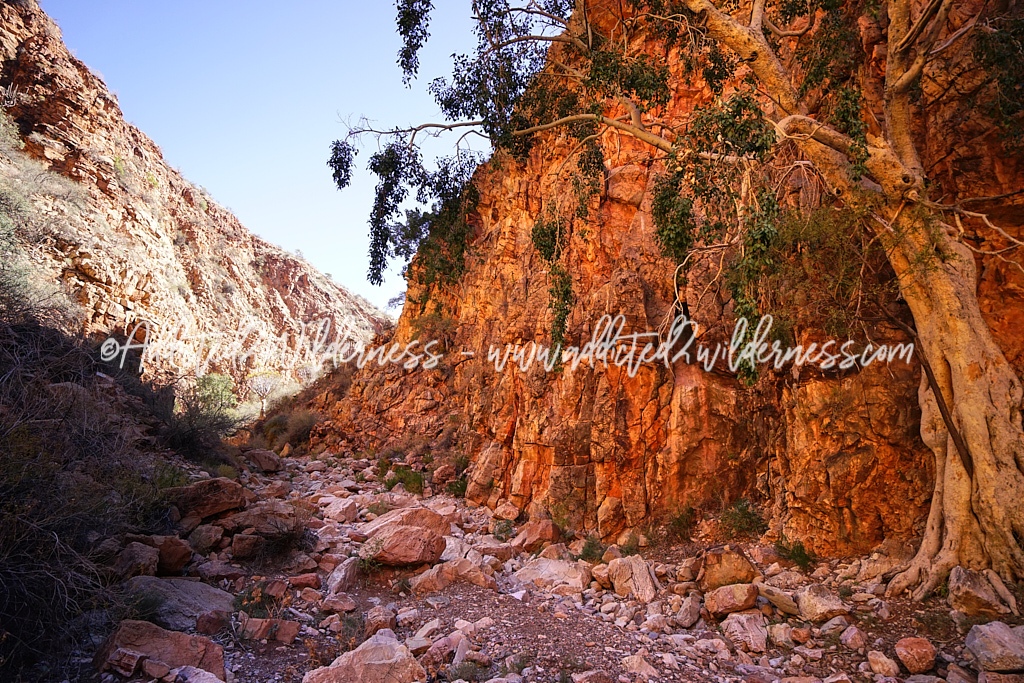
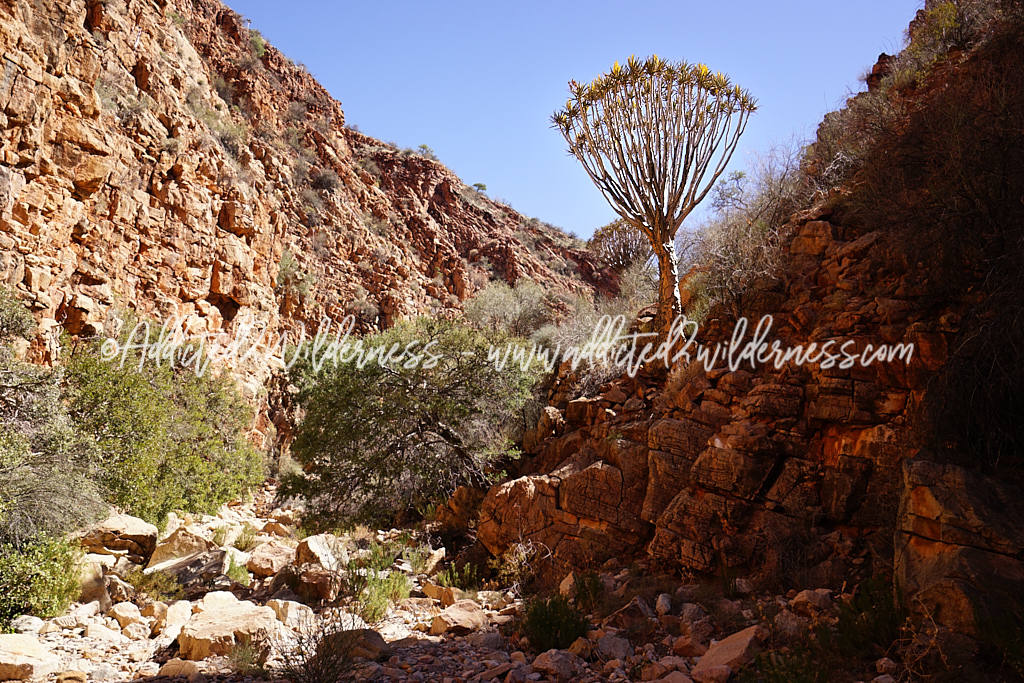
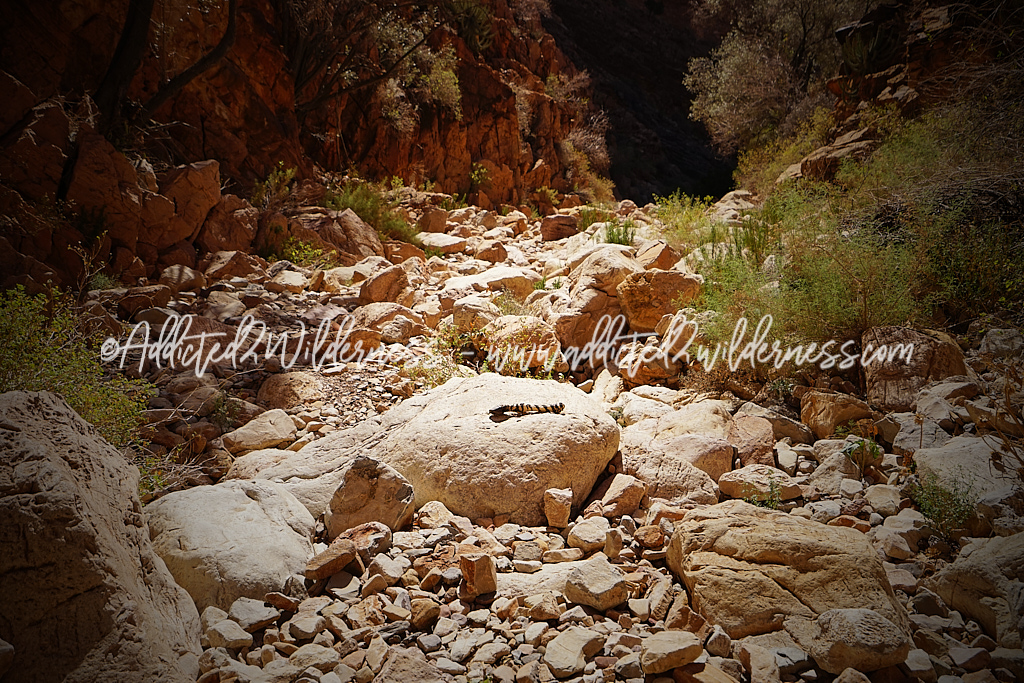
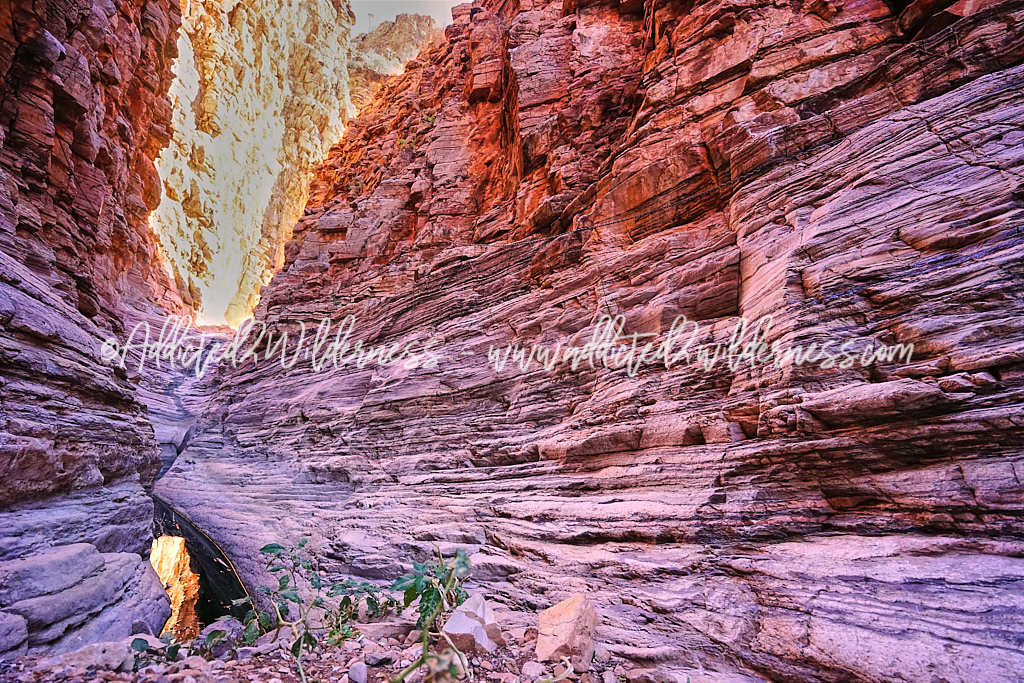

Comments
Amazing and powerful spirit
grazie
Grazie
I can see horizon line of desert is very beautiful